Readaloud of the Week: The Winged Girl of Knossos
What if the lost civilization of Atlantis was really the ancient Minoan civilization on Crete? That’s the jumping off point for this book, in which an inventor’s daughter gets caught up in a recognizable-but-distinctly-different take on the story of the Minotaur and Daedalus.
In brief: What if the lost civilization of Atlantis was really the ancient Minoan civilization on Crete? That’s the jumping off point for this book, in which an inventor’s daughter gets caught up in a recognizable-but-distinctly-different take on the story of the Minotaur and Daedalus. Tomboy Inas helps her father with his flying-machines and fights to save her father from King Minos’s wrath after Theseus escapes from the Minotaur’s labyrinth with the king’s daughter.
What makes it a great readaloud: Inas is a great heroine—spunky, smart, and talented. (In addition to helping with her dad’s inventions, she’s a skilled bull rider.) And the illustrations are based on actual artwork from ancient Crete.
But be aware: This book was published in the 1930s, when the standard happy ending for girls was getting married.
(We’re Amazon affiliates, so if you purchase something through an Amazon link, we may receive a small percentage of the sale. Obviously this doesn’t influence what we recommend, and we link to places other than Amazon.)
The Readaloud Day Guide: A 52-Week Reading List for World Mythology and Folk Tales
Think of mythology as the building blocks for future literature studies — though, admittedly, they can be messy, complicated, ambiguous building blocks. This 52-week reading list is designed to cover a full year of mythology studies, and while it’s accessible for elementary students just diving into the wide world of literature, older students looking for a place to start a systematic comparative literature study may also find this a place to begin.
Think of mythology as the building blocks for future literature studies — though, admittedly, they can be messy, complicated, ambiguous building blocks. This 52-week reading list is designed to cover a full year of mythology studies, adaptable for students of all ages.
Why mythology? These are the stories that inform our cultural landscape, influencing art, music, literature, and pretty much everything else we encounter on an everyday basis. Think of mythology as the building blocks for future literature studies — though, admittedly, they can be messy, complicated, ambiguous building blocks. This 52-week reading list is designed to cover a full year of mythology studies, and while it’s accessible for elementary students just diving into the wide world of literature, older students looking for a place to start a systematic comparative literature study may also find this a place to begin.
D’Aulaire’s Book of Greek Myths
Greek mythology is the perfect place to start diving into the world’s great myths. For so many of us, these stories — of all-powerful Zeus’s antics, Persephone’s pomegranate seeds, the heroes of the Trojan War — are touchstones that echo throughout western literature and our imaginations. Some of the big problems of mythology — notably rape and violence — are glossed over a bit here; depending on your child, you may want to talk a little about why these dark ideas are softened here.
Black Ships Before Troy
There are several young reader-friendly versions of The Iliad; I like this one because it echoes the jump-around style of the original instead of telling everything around the story of Achilles. For the ancient Greeks, the Trojan War marked a metaphorical line between the Age of Myth and everyday life — the war represented the end of the time of heroes. The Greeks believed that death with honor was better than a long and peaceful life, and the exploits of this war story reflect that hyper-masculine philosophy.
Greek Myths
With superficially simple but deeply complicated stories like world myths, the more versions you can read, the better your understanding will be of the ideas, values, and world views of the people who wrote them. Olivia Coolidge’s slightly old-fashioned take on Greek mythology (it was published in 1949) scrupulously attempts to give space to every god’s story, with an emphasis on drama and adventure. Compare these stories to the D’Aulaires’ to see what changes between retellings.
Percy Jackson and the Olympians: The Lightning Thief
Say what you will about Rick Riordan’s uber-popular series, few middle grades books have made Greek mythology as urgent and fascinating to a modern audience as the adventures of Percy and his friends. By now, the heroes, monsters, and gods of the pantheon will be familiar friends, and kids will love seeing Riordan’s modern-day take on Greek myth.
The Children's Homer: The Adventures of Odysseus and the Tale of Troy
Padraic Colum’s kid-friendly translation captures all the twists and turns of Odysseus’s long journey home, which help set the standard for what an epic journey should look like. Omniscient narrator? Check. Hero who faces death? Check. Geographical and emotional journey? Check. Odysseus’s adventures are interesting enough on their own, but they can also inspire other activities. Draw a map of Odysseus’s voyage, or make a board game based on his adventure.
Tales from the Odyssey
Mary Pope Osborne’s two-part retelling of Odysseus’s story is one of the best. Osborne manages to channel the non-stop excitement of the original (sorcerers! cannibals! shipwrecks!) in a way that’s easy to follow and fun to read. With stories like this that were told for centuries before they were finally written down, reading lots of different versions can be illuminating.
Aesop’s Fables
Aesop’s morality stories were written down in the sixth century B.C.E. and focus on many of the same lessons and ideas that Greece’s mythology hones in on: How should we treat each other? What makes a good leader? How do you deal with bullies? Jerry Pinkney retells more than 60 of Aesop’s best known fables with lush illustrations in a book. Kids may enjoy looking for instances of characters not following Aesop’s advice in other traditional myths.
Tomie dePaola's Book of Bible Stories
The stories of Jonah and the whale, Noah and the flood, Moses and the Pharaoh have influenced Western literature and art in significant ways, and it feels like a disservice to leave them out of your mythology studies. This collection isn’t intentionally secular, but its focus on the stories and characters rather than on religious principles makes it a good option for reading traditional Bible stories in their mythological context.
Usborne Children's Book of Bible Stories
One thing you’ll notice as you read through this collection of stories is how the motifs in them carry over into other literature: The baby floating down the river in a basket, the flood that reshapes the world, the hero who sacrifices himself to save the world — these ideas echo through mythological traditions around the world.
The City of Rainbows: A Tale from Ancient Sumer
As far as writing goes, this isn’t the most eloquent story you’ll ever read — its appeal is in its origin. Author Karen Polinger Foster is an archaeologist, and the story she’s retelling was preserved on clay tablets in ancient Sumeria. The story — of two kings whose different ways of seeing things cause confusion — is a classic folk tale that hints at the importance of the innovation of writing in Mesopotamia.
Gilgamesh the King
Ludmila Zeman focuses on the first part of the epic of Gilgamesh, where the not-so-nice king of Uruk meets his match — and ultimately his best friend — in the wild man Enkidu. Don’t make this the only version of Gilgamesh you read (see below); it’s bowdlerized to be kid-friendly in ways that may well annoy you, but the story is a good introduction to the world’s first epic, and the illustrations — inspired by Babylonian, Assyrian, and Sumerian art — are fantastic.
Gilgamesh the Hero
Once you’ve read the simplified picture-book, dive into this engaging retelling, which starts with Gilgamesh’s friendship with Enkidu but continues to his conflict with the goddess Inara and his (ultimately unsuccessful) quest for immortality after Enkidu’s death. Geraldine McCaughrean softens some of the R-rated elements of the story (including Gilgamesh’s rape culture mentality) without excising them.
Tales of Ancient Egypt
Greek mythology was heavily influenced by the more sophisticated philosophy of their Egyptian neighbors, and this chapter book by Roger Lancelyn Green focuses on the Egyptian pantheon, its heroes, and its ideas of magic and the supernatural. Reading it after you dive into the more popular Greek mythology lets you appreciate all those subtle points of influence that you might miss if you explore Egypt first.
Nelson Mandela's Favorite African Folktales
This collection includes 32 stories from across the continent of Africa — a broad swathe, to be sure, but it’s a vibrant sampler of African storytelling. A map at the beginning highlights the geographic region where each story originates, and you’ll find a mix of creation myths, hero stories, and trickster tales.
Kings, Gods, and Spirits from African Mythology
Jan Knappert retells 35 stories of gods, ghosts, heroes, warriors, tricksters, kings, and animals from the Zulu, Swahili, Bantu, Ashanti, and other African people. There’s no Wakanda, but there is definitely just as much magic in stories like “The Golden Stool” and “The Ogre Who Ate People.” Feel free to skip the less-than-thrilling introduction and cut straight to the stories.
The Star-Bearer: A Creation Myth from Ancient Egypt
Dianne Hofmeyer retells the odd but lovely Heliopolis creation myth, in which golden godchild Atun must separate Geb, god of Earth, and Nut, goddess of the sky, in order to make room for his creations. The story explains the different forces that the Egyptians believed governed their everyday lives: earth, wind, water, and sky.
Treasury of Egyptian Mythology: Classic Stories of Gods, Goddesses, Monsters, and Mortals
It’s surprising how few collections of Egyptian mythology there are compared to other cultures’ mythologies — perhaps it’s the air of weirdness that permeates Egyptian myth. Donna Jo Napoli’s retellings, collected in this book, are a step toward rectifying that omission, preserving the mythic weirdness while relating the stories in a way that resonates with younger readers.
Illustrated Arabian Nights
This luxe Usborne book edited by Alida Massari Anna Milbourne is a softened-for-kids version of the somewhat violent and misogynistic but also fantastic folktales from the Golden Age of Islam. You’ll find plenty of familiar names — Aladdin and his lamp, Sinbad the sailor, Scheherazade the storyteller — as well as more unusual stories.
Angels, Prophets, Rabbis, and Kings from the Stories of the Jewish People
These Jewish tales from the Talmud highlight the power of quick thinking, the benefits of good deeds, the importance of tradition, and the joys of family. Many of these tales date back to the Middle Ages, which makes them more recent than much of the other mythology on this list.
Seasons of Splendor: Tales, Myths and Legends of India
Cookbook author Jaffrey Madhur compiled this collection of Indian myths her mother told her as a child, organized according to the Hindu calendar, including the story of Rahu, the evil star who punishes the moon with an annual eclipse for trying to interfere in one of his nefarious schemes.
The Gita for Children
Roopa Pai tackles one of the most philosophically interesting conversations in mythological history, between Pandava prince Arjuna and his chariot driver, the god Krishna. This simplified version works on its own as a story, but layers of meaning are waiting to unpack with willing readers.
The Boys Who Fought: The Mahabharata for Children
The Mahabharata is one of India’s great epics, a complicated story about the Kuruksetra War between the wealthy Kauravas and their poor cousins the Pandavas. Devdutt Pattanaik retells the story in a simplified, comic book form, illuminating the ideas of dharma and karma in a kid-accessible way.
The Girl Who Chose: A New Way Of Narrating the Ramayana
Keep going with Devdutt Pattanaik’s take on India’s other great epic, the Ramayana, the story of Prince Rama’s quest to rescue his wife the Princess Sita from Ravana who has used an army of monkeys to kidnap her. Despite what the title suggests, this book isn’t a feminist take on the not-very-feminist story, but it does underscore the significance of choices in destiny.
Rama and The Demon King
Jessica Souhami takes an even simpler approach to the Ramayana in this picture book, which focuses on Rama’s battle with the ten-headed king of demons. The shadow puppet-style illustrations, following the traditional Indian art form, illuminate the story of Prince Rama’s life in the forest, which turns deadly when a demon vows revenge against him.
Amma Tell Me About Durga Puja
Bhakti Mathur does get some girl power going in this story about the mother goddess Durga who defeats the evil, shape-shifting, sneaky demon Mahishasura. The gods team up to create a super-powered ultra goddess, the only hero who can defeat this particularly villainous demon.
Aru Shah and the End of Time
It’s no surprise that the first book in Rick Riordan’s new Disney imprint features a hero who discovers she’s descended from a mythic hero — the twist is that 12-year-old Aru’s mythic heritage comes from Indian mythology. When she accidentally sets a sinister supernatural spirit free, she must channel her inner Pandava and discover the world of Indian myth lurking at the edges of the world she’s always known.
D’Aulaire’s Book of Norse Myths
Just as with Greek mythology, the D’Aulaires offer the perfect starting point for a deep dive into Norse mythology. (And just as with Greek mythology, this isn’t always easy because some of the original stories have dark and violent undertones.) From Odin the All-Father to Thor and his hammer to the great battle of Ragnarokk, these beautifully illustrated stories are a great introduction to the fantastic — if fatalistic — Norse pantheon.
Norse Mythology
Neil Gaiman definitely dives into the salty side of the Norse pantheon, so you may want to skim ahead to make sure you’re comfortable with the content — it’s totally consistent with the bawdy, violent world of Asgard, and Gaiman fully appreciates all the weird, wild antics of Norse mythology.
The Children of Odin: The Book of Northern Myths
Padraic Colum paints a fairy tale picture of life in Asgard once upon a time, emphasizing the fantastic elements of life in the world of the Norse gods.
Odd and the Frost Giants
Gaiman returns to Norse mythology with an invented story of a lonely boy who finds himself on a quest for the gods. Chris Riddell’s deliberate, slightly eccentric illustrations illuminate the story’s fairy tale nuance, while the story itself is steeped in Scandinavian myth.
Eight Days of Luke
Diana Wynne Jones beat Neil Gaiman to the punch by imagining a world peopled by undercover Norse gods and an ordinary boy who finds himself in the middle of an adventure he never anticipated. This is the perfect Wynne Jones mix of quotidian British life and high fantasy, but you’ll definitely want to save it for when you’re familiar with the fundamentals of the Norse pantheon — half the fun is identifying the secret identities of the different characters who crop up on David’s adventure.
Essential Chinese Mythology: Stories That Change the World
This collection of Chinese myth includes tales from Buddhist, Daoist, and Confucian mythology and offers a fascinating glimpse into a world of ideas that both parallels and sharply departs from the Western traditions we know so well.
The Eight Immortals of Taoism: Legends and Fables of Popular Taoism
Daoist mythology is a compelling combination of historical figures and supernatural forces, and these stories are a good introduction. The eight immortals are a surprisingly (and pleasantly) diverse group, including a woman, a student, a person who is physically disabled, and an androgynous hero.
The Emperor and the Kite
Little Princess Djeow never gets any attention, but her kite-flying skills save the day when her father is kidnapped and imprisoned in a tall tower. Djeow’s skill, persistence, and clever thinking earn her family’s respect in this not-so-traditional princess story.
Yeh-Shen: A Cinderella Story from China
In this early Chinese Cinderella story, you’ll find a fish instead of a fairy godmother but otherwise the same jealous stepfamily, royal ball, magical shoes, and the happy ending.
The Great Race: The Story of the Chinese Zodiac
The Chinese zodiac is full of animals — but plenty also get left out. This playful tale tells the story of how the rat cheated the cat out of a victory in the Jade Emperor’s great river swimming race — and a spot in the zodiac.
Treasury of Chinese Folk Tales
My favorite part of this eclectic collection of Chinese stories is that Shelly Fu and Patrick Yee give the historical and cultural context for each one.
Where the Mountain Meets the Moon
Grace Lin’s quest novel takes its magic from the Chinese myths and folk tales she grew up with, and the result is a delightful fantasy steeped in Chinese mythic tradition.
Tales Our Abuelitas Told: A Hispanic Folktale Collection
The tales in this collection reflect the diversity of the Hispanic world: Some are indigenous stories told by Latin American tribes, others come from Basque and the Middle East. Playful, chatty, and engaging, this is a lively introduction to some of the stories that have shaped Latinx culture around the world.
Hawaiian Myths of Earth, Sea and Sky
Vivian Thompson explores ten foundational Polynesian myths, focusing on the central core that runs through the islands’ mythological diversity. You’ll find strong parallels between the landmark-focused stories in these myths and those in Native American mythology.
Between Earth and Sky: Legends of Native American Sacred Places
Abenaki poet and author Joseph Bruchac tells the stories of ten spaces with sacred connections for various Native American tribes, including the Seneca story of Ne-ah-ga (Niagara Falls), to emphasize that all natural places are sacred spaces.
The Mud Pony
In this tale from the Skidi branch of the Pawnee Indians of the Plains, a boy must find his own strength after his sculpted mud pony — miraculously brought to life — returns to earth.
Raven: A Trickster Tale from the Pacific Northwest
This story from the Pacific Northwest people may remind you of the Prometheus myth: Feeling sorry for people trapped in the world’s eternal darkness, trickster Raven sneaks into the Sky Chief’s house to steal his light and warmth for the rest of the world.
How the Stars Fell into the Sky
In Navajo tradition, the chaos of the stars in the night sky reflects the chaos of life — and it’s no surprise that this starry chaos was caused in part by the trickster Coyote. First Woman patiently crafts a mosaic of laws in the sky, but impatient Coyote messes up her careful work, bringing chaos into the world.
Rabbit’s Snow Dance
The Bruchac pere et fils bring a much-needed jolt of charm and energy to this Iroquois fable about a rabbit who just can’t wait for snow — even though it’s the middle of summer. Compare this to the story of Pandora.
The Legend of the Bluebonnet
The theme of sacrifice in this Comanche folk tale will feel familiar after reading so many other myths: When She-Who-Is-Alone learns that the drought destroying her community is caused by the Great Spirit, who is angry with the Comanche for taking from the land without giving back, she understands that only a burnt offering of her most precious possession can save her people.
How Chipmunk Got His Stripes
This pourquoi story (or origin story) from East Coast Native American tradition isn’t particularly surprising, but the telling makes it feel that way: Brown Squirrel and Bear learn a lesson about bragging and teasing, and the chipmunk is created when Bear boasts that he can keep the sun from rising. It’s worth comparing this to some of the Greek origin stories.
Big Turtle
In this Huron-Iroquois creation story, Sky Girl is trapped between the water and the sky, and while she rides on the back of the Big Turtle, a series of animals attempt to bring enough earth from the bottom of the sea to give her a place to live. Little Toad succeeds, and Sky Girl’s descendants become Earth’s first people.
The Sun’s Daughter
You’ll be amazed by how much this Iroquois legend of the Corn Maiden reminds you of the story of Persephone and Demeter: When Maize slips away from her mother Sun to walk at night, she’s captured by the moon Silver. Just as in the Persephone myth, the resulting shared custody explains the origin of the seasons.
Kokopelli: Drum in Belly
It’s hard not to love Kokopelli, the fertility god musician who appears in the traditions of some Native American cultures in the Southwestern United States. In this origin tale, Kokopelli uses his music to lead the Ant People out of the Dark World and into the Green World, where they become the first people.
Arrow to the Sun: A Pueblo Indian Tale
The pattern of this tale set among the Pueblo people matches up to other traditional stories of virgin-born heroes who must face a series of trials, but the really interesting thing about it is how it represents a western mythology being superimposed on another culture. In fact, in Pueblo culture, illegitimate children are treated the same as other children, and the kivas are places of community, not of trial. Why would the author create a Western version of a Pueblo tale? This is a longstanding problem in telling the mythology of other people, and it’s one that after all the rest of your reading, you’re ready to tackle together.
Favorite Folktales from Around the World
Jane Yolen collects tales of tricksters, creation, the end of the world, and more in this collection of tales from Syria, Estonia, Peru, Haiti, and more countries whose mythological and folklore traditions may be less well known.
(We’re Amazon affiliates, so if you purchase something through an Amazon link, we may receive a small percentage of the sale. Obviously this doesn’t influence what we recommend, and we link to places other than Amazon.) This book list was originally published in the spring 2018 issue of HSL.
Book Review: Across the Pond
Surely I am not the only person who has imagined what it would be like to randomly inherit a castle in Scotland? With bonus birding adventures.
Across the Pond is a low-key middle grades charmer. Surely I am not the only person who has imagined what it would be like to randomly inherit a castle in Scotland? That’s exactly what happens to Callie’s family: Her mom and dad rented a cottage on the palace grounds while they were in college in Edinburgh, and the owner forged such a bond with her then-newlywed tenants that she left the castle to their family in her will. Adjusting to life in Scotland after growing up in San Diego might seem challenging, but Callie can’t wait — middle school has ripped her friend group to shreds, and she’s ready to reinvent herself in a new place. Only, as it turns out, the scenery has changed, but Callie hasn’t, and within a couple of weeks, she’s made enemies with their new handyman’s daughter and gotten kicked out of the local birding club for arguing that female birds should count in the sighting scores. The only thing keeping her going is the journal the former of the lady of the house kept when she was Callie’s age and shipped off to the countryside during the Blitz. Callie can definitely identify with Pippa’s lonely feeling of being always on the outside.
Of course this is all working toward a happier ending: Callie may have gotten kicked out of the birding club, but it helped introduce her to Rajesh, whose unflappable nice-ness is hard to resist. It also inspired her interest in birds, and as she’s trying to identify the swirling flock of tiny birds that settle in a tree across the lake every night (they’re starlings), she ends up befriending the handyman’s daughter, after all, realizing that everything isn’t always about her. Callie becomes an avid birder, making connections between her life and the birds she observes — just as Pippa did, all those years ago. There’s a core of real sweetness in this book that I loved: We all sometimes feel like we don’t belong, and we’re all delighted when we discover that we’ve found a community. For birding enthusiasts, for middle grades readers who enjoy realistic fiction, for anyone who’s ever wished for that castle in Scotland — you’ll want to pick this one up.
(We’re Amazon affiliates, so if you purchase something through an Amazon link, we may receive a small percentage of the sale. Obviously this doesn’t influence what we recommend, and we link to places other than Amazon.)
Book Review: The York Trilogy
I read this book at a time when I really needed to believe that one person, or a few people, could make a real difference — could make the world a better place. I would have loved this series for giving me that feeling alone, but it was also a deliciously tangled mystery, full of complicated people and challenging puzzles and the possibility of building community in unexpected ways.
The York Trilogy by Laura Ruby
Maybe it’s cheating to call the York Trilogy one of my favorite books of 2020 since it’s actually a trilogy, but it’s my book review, so I’ll bend the rules if I want to. Anyway, it’s the three books in combination with each other that rang my happy reading bells, so it would be misleading to call any one of them alone my favorite.
The York Trilogy is by Laura Ruby, who I think is one of the great underrated YA/middle grades authors of our time. The story begins with The Shadow Cipher, continues in The Clockwork Ghost, and concludes with The Map of Stars.
The stories are set in an alternate version of New York City that’s just a little bit better than our version — there’s still Hamilton and the Marvel franchise, but there are vegetarian restaurants everywhere. Climate change isn’t a problem. People practice sustainable living as the norm. There’s almost a complete absence of any kind of racism or sexism. And there’s even a sort of Native American United Nations that actively participates in national and international government.
It turns out the big difference between this reality and ours is two people: Theresa and Theodore Morningstarr, twins who emigrated to the United States from Germany in the late 1700s. The Morningstarrs were geniuses, inventors and idea makers, and the totally transformed first Manhattan, then the United States, then the entire world with their technology and philosophy. In this New York, everybody knows the Morningstarrs — they are two of the most important people in human history. They’re also famous because they left behind a secret puzzle — with clues hidden throughout the city they helped build. People have tried for centuries to solve it, but even though some clues have been discovered (and some even solved), no one has even gotten close to the big solution.
Tess and Theo Biederman — named by their grandfather after the famous Morningstarr twins — have been thinking about the Morningstarr puzzle their whole lives. Their grandfather has dedicated his entire life to trying to solve the puzzle, so when they discover a secret clue hidden right in their very apartment building, they realize that there’s more than one version of the puzzle out there.
The Biedermans team up with their neighbor Jaime, a comic book artist whose mom, a theoretical physicist, died in a terrible accident, and the three of them become best friends as they try to solve the cypher. Unraveling the clues takes them all over the city — into the history of New York, the Morningstarrs, and the United States in a series of puzzles that’s really delightful, right up until the surprising — but absolutely pitch perfect — conclusion.
I read this book at a time when I really needed to believe that one person, or a few people, could make a real difference — could make the world a better place. I would have loved this series for giving me that feeling alone, but it was also a deliciously tangled mystery, full of complicated people and challenging puzzles and the possibility of building community in unexpected ways. It is a series rich with big complicated ideas and nuanced distinctions — you have to pay attention if you want to keep up. I was surprised and delighted by it, and I bet you will be, too.
(We’re Amazon affiliates, so if you purchase something through an Amazon link, we may receive a small percentage of the sale. Obviously this doesn’t influence what we recommend, and we link to places other than Amazon.)
Book Review: The Mending Summer
This is a tender, nuanced portrait of finding that balance between hope and clear-eyedness that we need in all of our close relationships. Recommended.
The Mending Summer by Ali Standish
The Mending Summer isn’t a perfect book, but it’s a really good one: When Georgia goes to spend the summer at Aunt Marigold's so her mom can finish her degree, she is both relieved and annoyed. Annoyed because being stuck in the middle of nowhere with an aunt she hardly knows is definitely not going to be as much fun as her beloved summer camp. Relieved because things at home have gotten weird with her dad, who is sometimes the wonderful, loving father she has always known and sometimes “The Shadow Man” who is the opposite of the wonderful, loving father she has always known. When Georgia meets Angela in the woods, they vow to be “summer sisters” and discover a magic lake that seems like it can grant their wishes.
Realistic middle grades books often try to wrap up loose ends and “solve the problem,” but I liked that this book treated Georgia’s father’s alcoholism as a problem that she couldn’t solve: not by being the best daughter and not by wishing for a happy ending. The magic in this book is similarly unspectacular — it’s more about learning to see the world (including yourself) in different ways than it is about some big epic wish-come-true. These two things could leave you feeling like this is a ho-hum book, but it’s absolutely not — it’s a tender, nuanced portrait of finding that balance between hope and clear-eyedness that we need in all of our close relationships. Recommended.
(We’re Amazon affiliates, so if you purchase something through an Amazon link, we may receive a small percentage of the sale. Obviously this doesn’t influence what we recommend, and we link to places other than Amazon.)
Book Review: Alone Out Here
Here’s the thing: We have put a lot of pressure on this next generation. We have made a mess, and they are going to have to clean it up. That’s a heavy burden to carry before you even have your driver’s license, and I think it’s one that Riley Redgate handles really well in Alone Out Here.
Alone Out Here by Riley Redgate
Here’s the thing: We have put a lot of pressure on this next generation. We have made a mess, and they are going to have to clean it up. That’s a heavy burden to carry before you even have your driver’s license, and I think it’s one that Riley Redgate handles really well in Alone Out Here.
Earth is on the brink of collapse, and the future depends on getting off the planet and into outer space. Politically, this has been a nightmare, with in-fighting and one-upmanship pushing back deadlines, stymying communication, and generally making everybody suspicious of everybody else. That’s an adult problem, even if it’s one that constantly permeates every aspect of teenage life — until a weather disaster strikes earlier than planned, forcing the launch of a prototype spacecraft with a crew of diplomat offspring as humanity’s last hope.
Some of the promos called this “Lord of the Flies in space” (which I would read!), but I think that reduces Alone Out Here in a way that misses the point. These are kids — they’ve been taught to mistrust each other. The protagonist Leigh — First Daughter of the United States — has been trained to put the mission first and herself last. These are smart, committed, caring kids who really can save the world — but no one has ever taught them how to actually work together toward a common goal. As the crew clashes over who should be in charge, what their priorities should be, and how to make their not-ready-for-launch ship support their present and future needs, it’s clear that they have the same goals. Everybody wants to survive, even if they don’t agree what survival should look like
I don’t know, maybe it’s the state for the world, but this book made me surprisingly emotional. Like, can we please stop othering each other so that we have a chance to survive with our humanity intact? I really enjoyed this book and recommend it for your YA reading list.
Unit Study Idea: The African-American Struggle for Civil Rights, Past and Present
Carrie’s family wanted to study the history of civil rights in the United States, and they found the project incredibly rewarding. These were some of their favorite resources.
Early this year, I told my thirteen-year-old son I’d like to investigate a historical subject with him over an extended period, to give what we learned time to really sink in. He was game, so I showed him a list of potential topics I wanted to learn more about and asked if any intrigued him. He looked over my list and chose the American civil rights movement.
“It seems especially relevant to what’s going on in the news right now,” he commented. Neither of us had any idea just how relevant the topic was going to be.
The last few weeks have been tumultuous ones in America, with the shootings of Alton Sterling, Philando Castile, and Charles Kinsey and of police officers in Dallas and Baton Rouge sparking grief, outrage, and renewed calls for change. Philando Castile’s death hit particularly close to home for our family; Castile was killed during a traffic stop only three miles north of our St. Paul neighborhood, and several of our friends and neighbors have children who attend the school where Castile worked as a beloved cafeteria supervisor.
The following resources are ones my son and I studied together over the last few months, as well as a few that I’ve found personally helpful. These resources are only a very small sampling of the wealth of materials and perspectives out there, but these resources have given my son and me a historical context about systemic racism and African-American resistance that I just didn’t get from my own school education—or from my life as a white person who’s privileged to ignore racism if I choose. I’ve really needed that historical context these last few weeks. I think everyone does.
BOOKS FOR KIDS AND ADULTS
(roughly for ages 13 and up, though obviously you’re the best judge of what your kids are ready for)
Freedman’s book provides a window into Jim Crow America, detailing opera singer Marian Anderson’s struggle to establish herself as an artist in spite of being rejected by a conservatory based on her race and barred from hotels and restaurants as she toured America. The story continues with her success in Europe, her groundbreaking 1939 performance at the Lincoln Memorial, and the rest of her trailblazing career.
The Port Chicago 50: Disaster, Mutiny, and the Fight for Civil Rights by Steve Sheinkin
Sheinkin tells the amazing true story of black sailors who were barred from combat duty during World War II and assigned to loading munitions at a segregated naval base at Port Chicago, California—without receiving proper training or supervision on safe munition handling. In July 1944, a massive explosion at the base killed 300 sailors. In response to the unsafe conditions and unjustly segregated work environment, 244 sailors refused to go back to work until their grievances were addressed, ultimately leading to fifty of the men being charged with mutiny. Sheinkin takes an in-depth look at this important early case in the fight for civil rights.
“Letter from Birmingham Jail” by Dr. Martin Luther King, Jr.
Martin Luther King wrote this essay in April 1963 in response to a statement by eight white Alabama clergymen criticizing King’s methods of nonviolent civil disobedience. King’s argument, begun while he was in jail for breaking an injunction against demonstrating, is a powerful defense of breaking unjust laws in order to fight for a higher good, as well as an excellent model of persuasive writing. It’s also helpful for putting current Black Lives Matter protests into historical context; both King and many Black Lives Matter activists argue that in order to get the powerful to come to the table to negotiate, it’s sometimes necessary to break laws and disrupt “business as usual.”
March, Books One and Two by John Lewis, Andrew Aydin, and Nate Powell
In these graphic-novel style memoirs, Representative John Lewis tells the story of his childhood on an Alabama sharecropping farm and his role in the 1963 March on Washington and the Selma Voting Rights March, among other highlights of a life spent fighting for human rights. Lewis's role in the recent Capitol Hill sitdown strike for gun control makes this an even more timely read.
Marching for Freedom: Walk Together, Children, and Don’t You Grow Weary by Elizabeth Partridge
This account of the 1965 voting rights march from Selma, Alabama begins in compelling fashion: “The first time Joanne Blackmon was arrested, she was just ten years old.” Partridge keeps her focus on ordinary children and teens involved in the historic march and does an excellent job of making the march accessible and understandable for kids. I also love that she shows that there were sometimes disagreements and missteps within the movement; too often, I think we tend to envision the civil rights movement as a perfectly unified, top-down movement led by Martin Luther King. The reality was much messier and more grassroots than the oversimplified version of history enshrined in most school textbooks. This is a great book to read in conjunction with Turning Fifteen on the Road to Freedom by Lynda Blackmon Lowery, a firsthand account by a young person who participated in the Selma March, and We've Got a Job: The 1963 Birmingham Children's March by Cynthia Levinson.
How It Went Down by Kekla Magoon
Kekla Magoon’s young-adult novel tells the story of a black teenaged boy shot by a white man who mistakes him for a dangerous thief and gang member when he’s actually carrying home groceries from the local corner store. Narrated from multiple points of view, the book reveals how painfully difficult it can be to find the truth in the aftermath of a racially charged shooting.
Myers’s 1999 young-adult novel uses an innovative structure — part imaginary screenplay, part diary — to tell the story of Steve Harmon, an African-American teen on trial for murder. Through fragmentary flashbacks, readers gradually piece together Steve’s role in the crime and his journey through a criminal justice system that is predisposed to see a boy who looks like him as a “monster.” For my son and me, this was an eye-opening introduction to the problem of racial bias in our justice system.
X by Ilyasah Shabazz and Kekla Magoon
This fact-based novel by Malcolm X’s daughter and her collaborator Kekla Magoon chronicles the African-American leader’s early struggles with racism as a young boy in Michigan, his years in Boston and Harlem, his imprisonment for burglary, and his subsequent conversion to Islam and decision to change his name from Malcolm Little to Malcolm X.
A FEW MORE BOOKS FOR ADULTS AND OLDER TEENS
Butler’s novel tells the story of Dana, a modern African-American woman transported through time from 1970s America to the antebellum South, where she encounters her ancestors, a white slave owner’s son and his black slave. Through multiple trips spaced over several years, Dana is forced to intervene in her ancestors’ lives in ways that test everything she believes. Butler’s novel is the most compelling, searing examination of slavery and its legacies that I’ve ever encountered, exploring issues of race, sex, family, and gender in mind-blowing ways.
How to Slowly Kill Yourself and Others in America by Kiese Laymon
In this collection of essays, Kiese Laymon examines how racism damages African-American men, and how they in turn inflict pain and damage on themselves and the people they love, especially African-American women. Weaving together hip-hop, stand-up comedy, and other pop culture references, Laymon offers a passionate, introspective, vulnerable perspective on what it’s like to be young, black, Southern, and male in today’s America.
ON THE SCREEN
Eyes on the Prize: America’s Civil Rights Movement 1954-1985 produced by Henry Hampton :: The first six episodes of this fourteen-hour PBS documentary series cover the civil rights movement from the 1954 Montgomery bus boycott to the signing of the Voting Rights Act of 1965. The next eight episodes focus on such key events as the rise of the Nation of Islam, the Detroit riot of 1967, the Black Panthers, and the clash over Boston school desegregation. The series features riveting, occasionally violent news footage and interviews with people involved on both sides of the movement.
All the Difference directed by Tod Lending :: This PBS documentary follows two low-income African-American young men from the violence-ridden South Side of Chicago who struggle to beat the odds and complete high school and graduate from college. The documentary offers a close-up look at what helped these two students overcome multiple obstacles and setbacks.
IDEAS FOR OTHER RESOURCES
In Memoriam of Philando Castile :: The Minneapolis-based community-building organization Pollen put together this collage of music, spoken word, art, and poetry as a response to the shooting of Philando Castile. Especially noteworthy for homeschoolers might be the list of resources compiled by Twin Cities spoken word artist and community organizer Guante. That list can also be found here: http://www.guante.info/2016/07/a-few-resources-links-and-readings.html
YOUR LOCAL HISTORICAL SOCIETY
One thing I didn’t want to do with my son was pretend that racism and civil rights abuses were only a southern problem. Up here in the Twin Cities, one of our most painful legacies is the fate of St. Paul’s Rondo neighborhood, a thriving, vibrant African-American community that officials obliterated to make way for Interstate 94.
The same kind of destruction happened in many other cities, including Chicago, Miami, Los Angeles, Seattle, and Baltimore. The Minnesota Historical Society recently organized a bus and walking tour featuring Rondo history that my son and I were able to participate in. It was a great way for us to learn about the continuing effects of racism and meet people who’d been affected by losing their homes and businesses in the name of progress. A Google search of a phrase such as “How interstates damaged black neighborhoods” yields a plethora of articles. With just a little bit of digging, I suspect you could find similar stories and opportunities for investigation close to home, too—or if you already know about these stories, I’ll bet there are ways you and your family can take an even closer look at the racist legacies in your own back yard and on the roads you travel every day.
Book Review: The Troubled Girls of Dragomir Academy
I am clearly the target audience for a middle grades boarding school novel about taking down the patriarchy through education and fabric crafting, so I am happy to say I really enjoyed this lovely little fantasy. I recommend it.
The Troubled Girls of Dragomir Academy by Anne Ursu
It’s hard to be a girl in the patriarchal world Marya has grown up in. While her brother Luka is on the fast track to become a sorcerer (and one of the nation’s elite protectors), Marya is constantly in trouble.
Dragomir Academy, hidden away in the distant mountains, is where bad girls go. If they’re lucky (and learn to mind their manners), Dragomir grads can end up working as support staff for important sorcerers. If they’re not — well, at least they can’t cause trouble miles away from civilized society. At first, Marya is determined to follow all the rules and show that she’s not trouble after all. Gradually, though, she realizes that the men in power are hiding dangerous secrets and that sometimes good trouble is worth the risk.
I am clearly the target audience for a middle grades boarding school novel about taking down the patriarchy through education and fabric crafting, so I am happy to say I really enjoyed this lovely little fantasy. I recommend it.
(We’re Amazon affiliates, so if you purchase something through an Amazon link, we may receive a small percentage of the sale. Obviously this doesn’t influence what we recommend, and we link to places other than Amazon.)
HSL Reads: Book Review Roundup
Teen horror, Native American mythology, and prejudice in history class are highlights in this book review roundup.
If you follow us on Instagram, you know that we review books there pretty frequently, but since not everyone is on Instagram, we try to post some of those reviews here, too. Here’s some of what we’ve been reading:
Race to the Sun ★ ★ ½ ☆ ☆
The Assignment ★ ★ ★ ½ ☆
Harrow Lake ★ ★ ★ ☆ ☆
Homeschooling Literature with Movies: Great Book-Movie Pairings
You don’t have to choose between the book and the movie in these terrific adaptations—enjoy them both. We’ve rounded up some book-and-a-movie combos perfect for cold weather marathon sessions.
You don’t have to choose between the book and the movie in these terrific adaptations—enjoy them both. We’ve rounded up some book-and-a-movie combos perfect for cold weather marathon sessions.
We’re bringing some of our favorite content out of the archives and back onto the front page.
The film version gets the full Hollywood treatment (star Elizabeth Taylor definitely doesn’t have book-Velvet’s cottony hair and buck teeth), but it manages to hang onto the story of one stubborn girl’s determination to win a horse race.
Though it wanders from the book’s storyline, Studio Ghibli’s adaptation captures the sheer visual magic of the Borrowers’ tiny world with gorgeous animation.
Shaw’s play may feel like heavy going to readers new to his style, so take advantage of the delightful musical adaptation to appreciate its nuances—and to kick off the never-ending argument of what a happy ending to this story would actually be.
Maria’s quest to save her family from an unfortunate curse is the crux of this fantasy book and movie combo. (The book was J.K. Rowling’s favorite as a child.)
Though not a literal adaptation of the classic fairy tales, this inventive film about the enchantments of imagination, set in an abandoned theater, channels the same storytelling spirit—and may inspire some living room reenactments.
Really, this animated film—about a boy who teaches a warmongering robot how to love—should get more respect than it does—and Hughes’ lyrical storytelling is as memorable as his poetry.
Sherlock Homes sometimes used the alias Basil, so it’s no surprise that’s the name of the Sherlock Holmes of the mouse world, who—accompanied by his biographer/assistant Dawson—solves baffling crimes.
The action moves to New York and there are a few other changes in this lavish adaptation, but it slow-paced, dreamy filmmaking and a terrific Sara Carew make this movie a must-view.
This list was originally published in the winter 2016 issue of home/school/life. Because apparently winter is when we need lots of movie breaks.
The BookNerd’s Official Guide to Reading Hamilton
Don't let your obsession stop with the stage: Our Book Nerd's book-by-book guide to indulging your Hamilton obsession will keep you busy until ticket prices go down. (They have to go down eventually, right?)
We’re bringing some of our favorite content out of the archives and back onto the front page.
Far and away, the best thing to happen to our household in the recently-ended Year That Must Not Be Named was our discovery of the musical Hamilton. (Well, okay, and we got a kitten. So maybe the kitten is first. But Hamilton is a very close second.) I’ve been a history buff for a long time, so the musical provided me with the perfect excuse to spend way too much time reading some great biographies and history books. After all, I want to be able to answer intelligently any questions my homeschool students may have after we’ve listened to “Guns and Ships” for the 27th time. From that, I’ve come up with this list for anyone—homeschool student, homeschool parent, or interested bystander—who’d like to take a deep dive into the world of the Alexander Hamilton. I’m happy to present:
The BookNerd’s Official Guide to Reading Hamilton
1. Read Alexander Hamilton by Ron Chernow. The Biography That Started It All. Okay, yes, it’s over 700 pages long, but you can do it! Don’t throw away your shot! (Sorry.) Take a break whenever necessary and listen to a Hamilton track to stay inspired and if you really get bogged down, imagine the witty and erudite conversation you’ll be able to have (after finishing this book) with Lin-Manuel Miranda next time you run into him at the airport or the local sub shop or wherever. Besides, it’s a really good book.
2. Read Washington: A Life by Ron Chernow. Another awesome biography about Hamilton’s buddy and father figure, and c’mon, you know Lin-Manuel’s read this one too. This is actually my favorite bio by Chernow—one of my favorite moments is when the famously undemonstrative Washington had a falling out with Thomas Jefferson and changed his greeting to him in their correspondence from “My Dear Sir” to just “Dear Sir.” WASHINGTON ISN’T PLAYING, PEOPLE.
3. Read Short History of the American Revolution by James L. Stokesbury. Now that you’ve made it through some 1,500 pages of Founding Father biography, you’re probably interested in learning more about the actual fighting during the American Revolution. War histories can be incredibly long and difficult to keep up with, but Stokesbury’s Short History series (he’s also written books on World War I, World War II, etc.) provides great one-volume overviews. These books are great for homeschool shelves and have been highly recommended by My Brother, An Actual History Professor.
4. Read Founding Brothers: The Revolutionary Generation by Joseph J. Ellis. Ellis is another historian who specializes in taking big historical events and breaking them down into episodes that highlight important turning points. Ellis is always entertaining and this book, with chapters about the Hamilton-Burr duel, the Hamilton-Jefferson-Madison dinner, and Washington’s farewell address, seems tailor-made for Hamilton fans.
5. Read a Burr biography. The bad news is that there aren’t that many Burr bios out there (though I’m sure that is changing even now as publishers scramble to keep up with the Hamilton fandom); the good news is the man was fascinating, so whatever you can find on him will be a good read. Everything that happens with Burr during Hamilton? That’s just the warm-up to the good stuff, when Burr decided to raise a force of armed men and invade Mexico, or maybe Florida, or maybe he’ll just take over New Orleans. Historians are divided on whether he actually committed treason (SPOILER: he definitely committed treason) but Burr being Burr, he managed to avoid legal consequences. I recommend David O. Stewart’s American Emperor: Aaron Burr’s Challenge to Jefferson’s America (which primarily focuses on the post-duel years) and the two-volume biography by Milton Lomask (which I’m still working my way through but is great so far). War of Two: Alexander Hamilton, Aaron Burr, and the Duel That Stunned the Nation by John Sedgwick is also a great read. I can’t help it—I’ve become very fond of Burr. Sure, I wouldn’t let him talk to my daughters and I would NEVER EVER lend the man money, but I bet he would have been great to sit next to at a dinner party.
(Editor's Note: We read Gore Vidal’s fictional Burr for the podcast, where we gushed a lot about the Theodosias. As one does.)
6. Read Lafayette in the Somewhat United States by Sarah Vowell. Vowell’s writing here is wildly entertaining, as usual, so I’ll forgive her the fact that this book has a slightly disappointing lack of Hamilton. Really, you should do yourself a favor and read ALL of Vowell’s American history books. She’s a great addition to any homeschool shelf and I highly recommend her to students who maybe aren’t so sure that they’re interested in history. Assassination Vacation and The Wordy Shipmates are two of my personal favorites.
7. You should probably read a Thomas Jefferson biography, I suppose. I’m not the biggest fan of Jefferson, but yeah, he was an important Founding Father and a genius and all that. I don’t have a favorite Jefferson biography—though American Sphinx: The Character of Thomas Jefferson by Joseph J. Ellis is not a bad place to start—but there are plenty to choose from. I highly recommend reading The Hemingses of Monticello: An American Family by Annette Gordon-Reed alongside whatever Jefferson biography you choose, to provide some additional perspective.
8. And now that you’ve read at least TWO Pulitzer Prize winning books and are an American Revolution history buff, you should definitely reward yourself by reading the official book about the musical, Hamilton: The Revolution by Lin-Manuel Miranda and Jeremy McCarter. Except I’m sure you’ve already got it, so now you can reread it and have intelligent and informed opinions on all the choices Miranda made when adapting history for a Broadway musical! Or you can just continue to obsess over its amazing awesomeness, like the rest of us!
EXTRA CREDIT: Do you have room in your heart for yet another amazing Broadway musical about American history? Of course you do! So you must see the movie version of 1776, the musical about the creation of the Declaration of Independence. The music (while wonderful) is more Broadway standard than contemporary, and the cast consists almost entirely of white men, but like Hamilton, the dialogue and verses are based on the actual writings of our Founding Fathers, who show up here as complicated, funny, and occasionally obnoxious men, rather than secular saints in heroic poses. As a bonus, the lead is my personal favorite Founding Father, John Adams, so after you watch this, you can pick up avid McCullough’s John Adams, the biography on which the HBO mini-series was based. Just think of the great conversation you can have with Lin-Manuel now!
Happy reading, everyone!
If You Want to Read Something Profound
These powerful stories pack an emotional punch.
These powerful stories pack an emotional punch.
Speak Up by Miranda Paul and Ebony Glenn
A diverse class of students learn that when something really matters, one voice can make a big difference. Early grades
Woke: A Young Poet’s Call to Justice by Mahogany L. Browne et al
Poetry is a great medium for social change, and these inspiring poems by poets including Brown, Elizabeth Acevedo, and Olivia Gatwood, will make kids want to express their ideas about justice and injustice through poems and art, too. Early grades
Small Matters by Heather Ferranti Kinser
Powerful images from an electron scanning microscope show how tiny details can make a big difference in this eye-opening picture book. Early grades
Smack Dab in the Middle of Maybe by Jo Watson Hackl
Cricket believes she can bring her vanishing mama back if she finds the secret room that featured in so many of her childhood stories — so takes her only clue (a coin from a Mississippi ghost town) and sets off into the woods to find the truth about her family. Middle grades
Sylvia and Aki by Winifred Conkling
Sylvia and Aki faced different kinds of prejudice: Sylvia’s family had to start a legal battle to get her into school, and Aki’s family was relocated to an internment camp during World War Two. By coincidence, Sylvia’s family rents the house that Aki’s family was forced to leave behind. Middle grades
Clap When You Land by Elizabeth Acevedo
Like all of Acevedo’s work, the language in this verse narrative is the star. When their father’s plane crashes, two sisters — one in New York City and one in the Dominican Republic — discover each other’s existence and their father’s double life. High school
Parachutes by Kelly Yang
Class conflict, the Asian diaspora, and rape culture come together in this story about a wealthy international student from Shanghai who rents a room from a Filipino-American family. High school
Flyaway by Kathleen Jennings
In this eerie fairy tale, a rural Australian girl investigates the disappearance of her two older brothers. High school
Lose Your Mother: A Journey along the Atlantic Slave Route by Saidiya Hartman
You may well want to add this chronicle of the author’s journey along a slave route in Ghana to your high school history reading list — it’s a fascinating (and sad) look at a side of history we often gloss over. High school
This was originally published in the summer 2020 HSL reading guide.
Homeschool Road Trip: California Dreaming
Nature study doesn’t get more hands-on than this wonder-packed route along the California coast. See the redwoods, look for tide pools, and explore a landscape shaped by volcanic eruption.
Nature study doesn’t get more hands-on than this wonder-packed route.
Thanks to a unique mix of seashores, redwood forests, lava beds, and other natural wonders, northwest California is a mecca for budding naturalists.
DAY 1
Drop off your bags at the Westin St. Francis in Union Square, and take a visual tour of San Francisco aboard the Powell-Hyde line on one of the city’s iconic cable cars — it’s not the fastest way to get around the city, but it’s certainly one of the most memorable. Share a crispy-crust pizza at local favorite Tommaso’s before heading to Pier 33 to catch the boat to Alcatraz. Book your tour of the Rock in advance because spots tend to fill up for this excellent adventure. When you’re hungry, stroll to Chinatown for a dim sum dinner at Great Eastern; stick around to the browse the shops after your meal.
DAY 2
Load up the car and linger over house-made beignets at Brenda’s French Soul Food before making your way to U.S. 101 and Muir Woods National Monument. Follow the self-guided Nature Trail and Watershed Hiking map for a redwood ecology lesson/moderate hike through Cathedral Grove. You’ll probably be hungry after your hike, so jump back on U.S. 101 and head north to Point Reyes, where you can have a CSA-worthy lunch at Marin Sun Farms (open Thurs.-Sun. during non-COVID times). Then hit the beach at Point Reyes National Seashore. You can learn about the history of shore at the Bear Valley Visitor Center, visit Kule Loklo, a replica of a Coast Miwok Indian Village, hike the trails, visit the lighthouse, look for elk on the Elk Reserve, or just play on the beach. Feast on local, organic Italian fare at Osteria Stellina before checking into your room at the Point Reyes National Seashore Hostel.
DAY 3
Fill up with breakfast at Toby’s Coffee Bar, then spend a little time running around on the beach to prep for the longish drive ahead. The drive north on U.S. 101 to Redwood National Park will take about six hours, but there’s plenty of eye candy along the way. Stop for lunch at the Bluebird Cafe in Hopland and again for ice cream at Living the Dream Ice Cream in Eureka. After you check in at the Crescent City Motel in Crescent City, have dinner with a view at the Chart Room, then play on the hotel beach until bedtime.
DAY 4
Eat a hearty breakfast at Good Harvest Cafe, then swing by the Safeway supermarket for picnic fixings before heading to Redwood National Park. Plan to spend the whole day here, breaking for a whale-watching lunch near the Klamath River Overlook or Crescent Beach Overlook. Some of the giant trees here are more than 4,500 years old, but you can also play in the Smith River, explore the tide pools along Enderts Beach at low tide, look for elk in the Elk Meadow, and seeing what’s on the park’s program schedule for the day. You’ll be tired and hungry at the end of the day, so stop for dinner at Kin Khao Thai restaurant before heading back to your hotel.
DAY 5
Wake up early and pick up breakfast on the road as you head toward Oregon on U.S. 199. It should take a little more than two hours to reach Crater Lake National Park. To get amazing views of this landscape, caused by a volcanic eruption 10 times more powerful than the 1980 Mt. St. Helen’s eruption, take the just-under-1-mile hike to Watchman’s Point. Have a leisurely lunch at the Annie Creek Restaurant, then settle back down in the car for the 2.5-hour drive to Lava Beds National Monument. Make advance reservations to join one of the ranger-led Fern Cave tours, where you can still see pictographs left by Native Americans centuries ago. Take the easy 0.8-mile hike to Symbol Bridge and the Big Painted Cave to see more Native American artwork. Call ahead to arrange dinner at the Winema Lodge in Tulelake, and you’ll be ready to settle in for the night.
DAY 6
Have breakfast at the Lodge before following CA-36 south to Lassen Volcanic National Park. Follow the moderate, three-mile Bumpass Hell trail to see bubbling hot-water pools, belching mudpots, and steaming fumaroles at the park’s largest hydrothermal area. To experience the after-effects of a major eruption first-hand, take the Devastated Area interpretive trail, which chronicles the Lassen Peak eruptions of 1914-17. Make reservations for a hearty lunch at Drakesbad Guest Ranch, located inside the park. Once you’re back in the car, it’s about a four-hour drive to Lake Tahoe. Enjoy some authentic tacos at Taqueria Jaliscos, then check in at Lakeland Village, where the kids can splash in the lake-view pool until bedtime.
This was originally published in the summer 2014 issue of HSL, but we’re in the mood for some vicarious travel right about now. We updated some information when we republished this online in 2021, but always double-check before relying on travel information!
If You Want to Read Something with Memorable Characters...
It’s the brilliantly realized characters and relationships that make these books sing.
It’s the brilliantly realized characters and relationships that make these books sing.
The One and Only Bob by Katherine Applegate
The One and Only Ivan’s best friend, Chihuahua mutt Bob, tells his own story in this sequel to the Newbery classic. Middle grades
The Adventures of a Girl Called Bicycle by Christina Uss
12-year-old orphan Bicycle is supposed to go to sleep-away camp at the Friendship Factory; instead, she decides that she’s going to ride her bike to California so she can meet her hero, Polish cycling racer Zbig. Middle grades
Ways to Make Sunshine by Renee Watson
Ryan Hart has a lot on her mind: all the things she wants to invent, her family’s new (old) house, financial problems, an infuriating brother, and recipes that don’t always go right. But she’s determined to see the best in everything that happens. Middle grades
The List of Things that Will Not Change by Rebecca Stead
Bea keeps a list to remind her of the constants in her life since her parents’ divorce: No matter what, her mom and dad will love her and each other. Still, she’s excited and nervous about the big change when her dad tells her he’s going to marry his boyfriend Jesse, who has a daughter of his own. Middle grades
We Dream of Space by Erin Entrada Kelly
This family story about the destructive and healing potential of words follows three siblings in the weeks leading up the Challenger’s 1986 launch. Middle grades
Stepping Stones by Lucy Knisley
Illustrator/memoirist extraordinaire Knisley charms in her first middle grades graphic novel about a girl who unwillingly moves to the country with her mom after her parents get divorced. Middle grades
Dragon Hoops by Gene Luen Yang
The author of American Born Chinese delights readers again with this story of a comic book-loving boy who discovers an unexpected interest in the superhero-esque arc of his high school’s basketball team. High school
Felix Ever After by Kacen Callender
This twisty whodunnit is a standout for its diverse cast and lovable protagonist: a Black trans artist who must learn what it really means to love who he is when an anonymous fellow student harasses him with transphobic messages. High school
Camp by L.C. Rosen
Camp Outland is Randy’s happy place: a camp for LGBTQ+ kids and the place where he met his Super Crush Hudson Aaronson-Lim. But Hudson doesn’t like boys who don’t act straight, so Randy reinvents himself as Del, a manly man who doesn’t wear nail polish or put unicorn sheets on his bed. Of course, you can only pretend to be someone you aren’t for so long before you start wondering whether it’s worth it to give up your identity for love. High school
August Folly by Angela Thirkell
Think of this 1936 novel as classic Brit lit charmer, in which a bunch of rural English folk put on fetes and amateur theatricals, pour tea, fall in love, and otherwise wander through their bucolic lives where nothing really terrible ever happens. High school
This list was originally published in our summer 2020 reading guide.
Homeschool Travel: A Mixed-up Tour of the Metropolitan Museum of Art in New York City
It’s the ultimate spring break getaway: Take your favorite readaloud, choose a destination inspired by it, and hit the road for a family vacation that’s the perfect homeschool mash-up. Chances of pulling off a ninja sleepover at the Metropolitan Museum of Art get slimmer every year, but that doesn’t mean planning how you’d do it isn’t a ton of fun.
It’s the ultimate spring break getaway: Take your favorite readaloud, choose a destination inspired by it, and hit the road for a family vacation that’s the perfect homeschool mash-up. Chances of pulling off a ninja sleepover at the Metropolitan Museum of Art get slimmer every year, but that doesn’t mean planning how you’d do it isn’t a ton of fun.
The Book: From the Mixed-Up Files of Mrs. Basil E. Frankweiler by E.L. Konigsburg
The Destination: New York City
In The Mixed-Up Files of Mrs. Basil E. Frankweiler, two suburban Connecticut kids hatch a scheme to run away to the Metropolitan Museum of Art in New York City — and for three magical days, they succeed in camping out inside the museum.
It’s easy to see how Claudia and Jamie might have succeeded in a more low-tech world the minute you walk through the doors: The Met is huge, and you can get lost here for hours. To follow in the Kincaid siblings’ footsteps, you’ll want to come in with a plan—you can download the museums From the Mixed-Up Files walking tour from the museum website and arm your phone with the museum’s handy app to make the most of your visit. Start, much like Claudia and Jamie, with the restrooms. The best (and usually least crowded) restrooms are by the Chinese art galleries — look for the glazed huzi (that’s a fancy word for urinal) standing opposite the restroom doors. Alas, the new-fangled doors are the kind that automatically stand open unless they’ve been locked, so hiding out after hours there would be tricky.
Next you’ll need to scope out a place to stash your stuff. Of course you won’t really be able to interact with the exhibits this way, but the fun’s in the imagining! The Greek exhibition is a good place to start, since there are plenty of conveniently sized urns and terracotta kraters. Or follow Claudia’s lead, and plan to tuck your violin case in a Roman sarcophagus — there’s a particularly fancy marble one on display in the Roman Sculpture Court that features Dionysus surrounded by the four seasons. The Japanese screens in the Sackler Wing Galleries might also be a convenient spot to stash a case—at least before the museum installed motion detectors.
Finding a place to sleep is fun. The bed Claudia claimed as her own on her extended Met sleepover is no longer on display, but you can still find plenty of elegant places to imagine spending the night. The uber-posh 18th century furniture in the Lauzun Room was so opulent and expensive that even the wealthiest people didn’t use those beds for sleeping: Instead, these carved and curtained beds were where they received official visits at home. Gallery 521, which celebrates the decorative arts from the long and elegant reign of Louis XIV, also houses some pretty spectacular beds.
Claudia and Jamie manage to see most of the museum by trailing school groups, but you can chart your own course. Follow the crowds to the Egyptian exhibition in the Sackler Wing — the highlight is the fully reconstructed Temple of Dendur, but you’ll also want to look for the elaborate Egyptian jewelry that captured Claudia’s attention and the smug carved cat who reminds Jamie a little too much of his big sister. Claudia visited the 16th century French chapel now in Gallery 502 to meditate on the sin of stealing people’s wish coins from the fountains, but it’s a peaceful, beautifully carved place to refocus your mental energy. Jamie thinks the Renaissance galleries will bore Claudia, but exhibitions like the Venetian gallery with its dazzling paintings by Titian and Veronese and the Castle of Velez Blanc patio, filled with fantastic sculptures, are anything but dull. The real magic at the Met, though, happens when Claudia discovers something she wasn’t looking for, so give yourselves some time to wander and see what you discover.
By now, you’ve probably worked up an appetite. On your way to lunch — at the cafe in the American Wing, where Claudia and Jamie bought snacks, or down to the cafeteria, which is probably as close as you can get in 21st century Manhattan to the Horn and Hardart Automat where the Kincaids spent their breakfast budget — stop to drop a coin in the fountain with two frolicking cherubs in the Charles Engelhard Court in the American Wing. (The Fountain of the Muses, where the Kincaids bathed and change-gathered, has since moved to South Carolina.) You never know when your quarter might come in handy.
Planning Your Trip
For maximum mixed-up vibes, start your New York City trip by rolling into Grand Central Station and hoofing it for the 45-minute walk north to the met. stay at the nearby Garden Suites Hotel by Affinia — the Hotel Wales, which we recommended when this was published, has since ceased operation. Other museums near the park include Solomon R. Guggenheim Museum and the American Museum of Natural History. Central Park is a great place to get your wiggles out: Highlights for kids include the Ancient Playground (named for its proximity to the Met’s Egyptian wing), boat rentals at Loeb Boathouse, the beautifully manicured Conservatory garden, or the rugged waterfalls and woods in the park’s northwest corner.
This was originally published in the spring 2018 issue of HSL. We’ve updated links for online publication in 2021, but always double-check before basing your travel plans around online recommendations!
If You Want to Read Something Exciting...
Looking for something exciting to read this summer? These action-packed books will keep you turning pages.
These action-packed books will keep you turning pages.
The Real McCoys by Matthew Swanson
The world’s greatest 4th grade detective is missing her crime solving partner since her best friend moved away, and now she’s on her toughest case yet: the case of the kidnapped school mascot. She can’t solve this one alone — but will she be able to find a new partner? Early grades
Ikenga by Nnedi Okorafor
Akata Witch author Okorafor is back with her trademark blend of Nigerian magic and realism in this story about a boy with super powers on a mission to avenge the murder of his police chief father. Middle grades
Sal & Gabi Fix the Universe by Carlos Hernandez
A Gabi from a parallel universe arrives to warn the titular duo that their efforts to close all the wormholes might actually — oops — destroy the universe. Middle grades
The Unbeatable Squirrel Girl: Squirrel Meets World by Shannon Hale
Everybody’s new favorite super hero, Squirrel Girl has all the powers of a squirrel and all the challenges of life as a 14-year-old in a new town. Middle grades
Again Again by E. Lockhart
The We Were Liars author ups the plot twist ante with an iterative multiverse: In the summer between her junior and senior year, Adelaide deals with romantic, family, and academic problems. High school
Burn Our Bodies Down by Rory Power
Power follows up her weird but compelling Wilder Girls with a creepy thriller about a girl who returns to her mother’s hometown to find the truth about her family history — and gets more than she bargained for. High school
A Peculiar Peril by Jeff VanderMeer
The prophet of Weird brings his distinctive voice to YA fiction with this fantasy about an orphaned teen who inherits the family manor — and its portals in the basement that lead to an alternate Earth where a maniacal Aleister Crowley is in charge. High school
The Count of Monte Cristo by Alexander Dumas
This is the classic everyone is riffing these days, but the original story about a falsely accused young man who brilliantly plots his revenge against his betrayers is still worth reading. High school
Catherine House by Elisabeth Thomas
Acceptance at the elite Catherine House ensures students a successful future — but to attend, students must shut themselves off from the outside world for their three-year tenure. Rebellious Ines finds Gothic mysteries lurking beneath the shiny, raucous surface of her new life. High school
Homeschool Road Trip: Water World
The ocean is your fellow traveler along US-1, and there’s plenty of fun to be had in and out of the water as you travel down Florida’s southernmost tip.
Explore the shore in the Florida Keys.
The ocean is your fellow traveler along US-1, and there’s plenty of fun to be had in and out of the water as you travel down Florida’s southernmost tip.
DAY 1
Pick up your car at the Miami International Airport, and fuel up with eggs and bagels at Coral Bagels before moseying over toward US-1 South. It shouldn’t take you much more than an hour to reach Key Largo’s John Pennekamp Coral Reef State Park. Get oriented with a 2.5-hour glass-bottom boat tour of key segments of the Florida Keys National Marine Sanctuary, then take the kids scuba diving or snorkeling through the park’s coral reef. Check into a comfortably minimalist room at the Rock Reef Resort, and clean up before heading out to a dinner cruise to the Pilot House restaurant aboard the African Queen—yes, that African Queen.
DAY 2
Have breakfast and a Key Lime muffin at Harriette’s Restaurant before making the short drive south to Tavernier. The Florida Keys Wild Bird Center is home to some pretty amazing birds, including great horned owls, peregrine falcons, black-bellied plovers, and more. (All the birds with permanent homes at the Center are unable to live in the wild because of injuries.) Head south to Islamorada for a fried seafood basket at the Hungry Tarpon, then pick up a 2 p.m. fishing charter at Robbie’s Marina to test your luck in the “sportfishing capital of the world.” If you get lucky, the Hungry Tarpon will cook up your catch for dinner before you check in at the Pelican Cove Hotel. Spend the evening splashing in the water in the pool or along the hotel’s private beach.
DAY 3
Wake up early to beat the breakfast crowds at Midway Cafe and Coffee Bar, arguably home of the best cup of coffee in the Keys. Then head back to Robbie’s Marina to pick up picnic supplies and rent kayaks for a trip to Indian Key. In the early 1800s, Indian Key was a thriving village and the county seat for Dade County, but it became a ghost town after a Seminole attack in 1840 devastated the community. Bring your snorkeling gear if you want to check out the bustling underwater environment, and wear sturdy shoes to explore the island ruins. After a lazy picnic on the beach, head back to shore to explore the History of Diving Museum, which offers a surprisingly interesting look at underwater exploration past and present. Have a quiet dinner at the aptly named Lazy Days before hitting the beach at your hotel.
DAY 4
Have a quick diner-style breakfast at Mangrove Mike’s before continuing south on US-1 to the Grassy Key Dolphin Research Center. What’s cool about this attraction is that it’s first and foremost a research and education facility, and while it’s not cheap, especially when you tack on interactive experiences like swimming with dolphins or working as a trainer for a day, it’s worth the splurge. Grab lunch at the center’s food stand. When you’ve had your fill of dolphins and sea otters, eat an early dinner at Fish Tales Market and Eatery in Marathon before checking in at the no-frills but friendly Siesta Motel.
DAY 5
Chow down on seriously hearty breakfast fare at the Stuffed Pig on your way to the Turtle Hospital, a working animal hospital where rescued and injured sea turtles are rehabilitated. Then prepare for some seriously amazing scenery as you head south across the Seven-Mile Bridge, where you’re surrounded by ocean on every side. (That cute little coconut stand makes a good place to pull over for some photos. You can pick up a $.50 coconut, too, putting your change in the box on the honor system.) Keep heading south on US-1. If you’re hungry, stop for lunch at No Name Pub. Keep your eyes peeled as you head into the National Key Deer Wildlife Refuge —if you’re lucky, you might spot one of the elusive and endangered Key deer. Unload your gear into your room at the affordable Parmers Resort, just north of Key West in Little Torch Key, then drive into Key West for tacos and Korean barbecue at Garbo’s Grill, where the jovial crowds are part of the fun. Spend the rest of the evening burning off extra energy on the beach at Fort Zachary Taylor State Park.
DAY 6
Drive into Key West for breakfast at Pepe’s cafe — ask about the specials — before visiting the Ernest Hemingway House and Museum, where you can learn more about the U.S. writer who lived and wrote here for more than a decade. Kids are often more impressed by the six-toed descendants of Papa’s cat Snowball, but the museum is well-done. Have a French-accented lunch at La Creperie, then browse the hodgepodge collection at Key West Island Books if you want to pick up a little Hemingway for your flight home. The Harry S. Truman Little White House was more than just the winter resort for President Truman (perhaps the only man who can say that becoming President of the United States was a decided step down career-wise)—it also served as a response site during the Cold War.
This was originally published in the summer 2014 issue of HSL, but we’re in the mood for some vicarious travel right about now. We updated some information when we republished this online in 2021, but always double-check before relying on travel information!
History at the Movies: The Tudors
It’s no wonder the Tudor years are popular with movie-makers — their period of English history really does feel like one big soap opera.
It’s no wonder the Tudor years are popular with movie-makers — their period of English history really does feel like one big soap opera. From the War of the Roses (which paved the way for a Tudor takeover) to the larger-than-life Henry VIII to the world-changing reign of Queen Elizabeth, there’s plenty to explore in these films set during turbulent Tudor times.
Wolf Hall
This adaptation of Hilary Mantel’s trilogy (the final book is out now) reminds us that Henry VIII wasn’t always an overweight wife-killer — in the early days, he was England’s heart-throb hero. Through the eyes of commoner-turned-adviser Thomas Cromwell, we watch Henry transform into a tyrant over the course of this miniseries.
A Man for All Seasons
Sir Thomas Moore butts heads with Henry VIII over the king’s role as head of the church in this gorgeously filmed period piece. It’s an old- fashioned, dialogue-driven film that really digs into the big philosophical question that defined so much of the Tudor era: Does the king or the church have ultimate authority?
Anne of the Thousand Days
Either you feel sorry for Anne Boleyn or you think she’s a scheming Jezebel, but this film tries to capture a more multifaceted view of the second Mrs. Henry VIII (and the first to be beheaded.)
Elizabeth
Though this adaptation plays fast and loose with some historical facts, it nonetheless does a brilliant job capturing Elizabeth I’s transition from opinionated individual to English icon. Cate Blanchett’s Elizabeth slowly realizes that her own feelings and dreams have to be sublimated if she wants to rule England — and she really, really wants to rule England.
Making Art a Family Project
If you want to make your homeschool a place that values creativity and creating, you can’t sit on the sidelines and wait for it to happen — you’ve got to get messy with them.
If you want to make your homeschool a place that values creativity and creating, you can’t sit on the sidelines and wait for it to happen — you’ve got to get messy with them.
In my early years of parenting, I’d set up crafty-type art activities for my first two children, and my creative interests would be pursued during the odd kid-free moment. Then I had a third child, who did not agree with the concept of kid-free moments. That’s when I shifted my approach and began setting up art explorations for all of us. This was purely a desperation move; I felt shrunken and depleted and needed to get my hands in paint and charcoal, even if only for a few moments in between assisting my children. I aimed for at least once a week. With three young children and homeschooling and life in general, it’s too easy to let non-necessities fall through the cracks. But art, for me, was a necessity, and I wanted it to be a regular part of my children’s experience, so I made it a priority.
We’re never going to fit everything in, and if we don’t consciously schedule those things we need and want to have happen, chances are, they will fall by the wayside as we fill our time with other things. We had a lovely art area at the time that I’d created when we had the chance to finish our basement, but nobody was using it. Just creating the space wasn’t enough; I needed to dedicate the time, too. For a long while, Sundays were art days. I carved out the time and treated it like any other commitment. Art wasn’t limited to just that time; once we made a habit of using the space together, we found ourselves there more and more. Before too long, the art area was being used as I’d hoped: my older kids were comfortable going in and out and finding what they needed, and my toddler soon asked for what she wanted with detailed specificity, often daily. They came up with ideas for explorations as often as I did, and we continue to make art together and separately.
The key, of course, is to form the habit of art making. This requires space, materials, and dedicated time. I often hear that the first and second items are difficult, but I suspect the real roadblock is number three. Decide when art time is going to be and write it on the calendar. Make it as high a priority as co-op or that class at the library or the play date at the park—all of which, I bet, get written on the calendar. Block out the time even if it doesn’t all get used up at first. It doesn’t even have to be a lot of time. It just has to be protected.
When I decided we needed to explore art, though, I had no idea where to begin. I realized most everything I’d done with children up to that point was properly classified as “crafts,” so I tried to educate myself. Susan Striker’s Young at Art book has been a fabulous resource, and is all you need if you have young children. For older children and adults, it all depends upon interest, but a challenge might be just the thing for kickstarting an art habit. Brainstorm a list of items to draw until you have a month’s worth, and then draw one per day. (You can also search the Internet for drawing challenge lists, or borrow 642 Things to Draw from the library. That will keep you busy for a while!) The “Lab” series of books is a wonderful resource for digging deeper into certain areas. We have Paint Lab, Drawing Lab, and Art Lab for Kids on our home bookshelf, but the series also includes books on color, collage, printmaking, and more. These are all good places to find ideas to jump start your art explorations.
I can’t stress enough that art in the home is, ideally, open to everyone, and by that I specifically mean adults. I don’t believe it’s fair for the kids to have all the fun. I’ve spoken to far too many parents who believed they just weren’t artistic. If you feel that way, I hope you sit down next to your child and play with the paints, too. Don’t set out to make anything in particular; give yourself permission to make a mess. See what the materials can do. See what you can do. One of the biggest gifts of homeschooling and parenting, in my opinion, is the way it lets us adults tap into the creative, curious enthusiasm of childhood. Join in at the art table. Have fun!
6 Ideas for Your Winter Homeschool
Keep things interesting in your homeschool even when the weather outside is frightful. We’ve rounded up some fun activities to get you through the midwinter slump.
Keep things interesting in your homeschool even when the weather outside is frightful. We’ve rounded up some fun activities to get you through the midwinter slump.
The post-holiday, miles-to-go-until-spring stretch of winter tends to breed boredom and discontent — but if you have a solid action plan in place, you can combat the midwinter slump, says Dr. Michael Danzinger, M.D., an assistant professor at Tufts University School of Medicine in Boston. The key is to mix a few surprises into your everyday routine so that your days shake that humdrum feeling and keep you interested and engaged. “Your attitude is the best happiness booster you have when the midwinter slump hits,” says Danzinger. So before boredom kicks in, plan how you’re going to send it packing — at least sometimes. (A little boredom can be a creativity booster, so you don’t want to jump into cruise director mode at the first sigh.) Need a little inspiration? These activities are all fun ways to help take the blah out of midwinter homeschooling.
MAKE AN ICE VOLCANO
Combine 2 cups of baking soda with very warm water in a pie pan; stir until baking soda dissolves; then, freeze. Fill a squeeze bottle with vinegar. (Add a few drops of food coloring if you like.) When the ice is frozen in the pie pan, remove it from the freezer, and squirt it with the vinegar to create an acid/base reaction. All those bubbles are CO2 released by the chemical reaction.
MAKE A COOKIE DELIVERY
Keep the food sharing fun going post-holidays by baking a big batch of your favorite treat and delivering care packages to friends and neighbors. (Random Acts of Kindness Day is February 17!)
CLEAN OUT YOUR CLOSETS
C’mon, you’re definitely not going to want to do this when the weather warms up. Now’s the perfect time to clear out your closets, reshelve your bookcases, and sort through the back of your pantry.
THROW AN OSCARS PARTY
Make a point to watch as many nominated films as you can, and compete to see who can predict the most correct winners during the award show. You can go fancy with cocktail fare and sparkling cider, or make it a big pajama party-sleepover.
PUZZLE YOURSELF
January 29 is National Puzzle Day, but a good, challenging jigsaw puzzle — like the 1,000-piece Rainbow Palette puzzle — will keep your entertained for days. (This one has letters on the back in case you get stuck and need a little help moving forward with the puzzle.)
WATCH A MUSICAL
It’s no Hamilton, but the Rodgers and Hammerstein musical Oklahoma! celebrates its Broadway birthday on March 31, which makes this the perfect time to get addicted to a new Broadway musical. (We love Hadestown!)












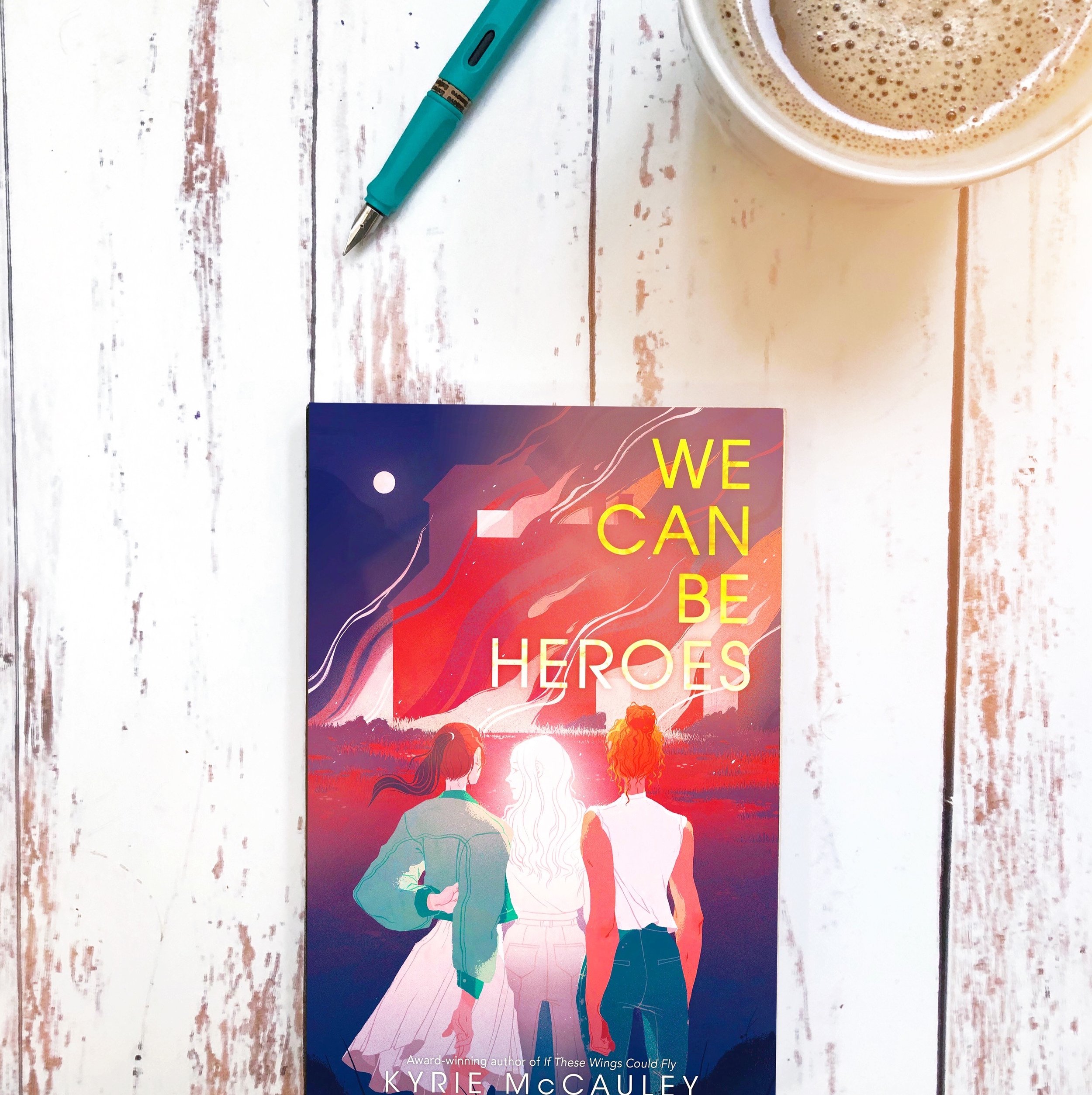













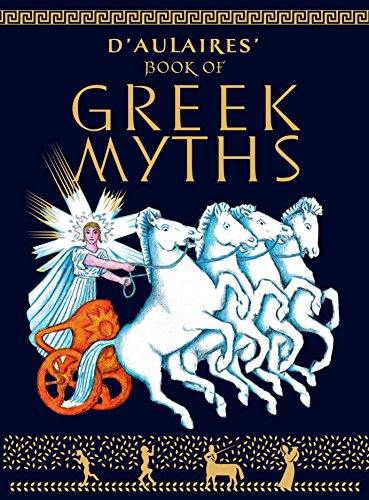



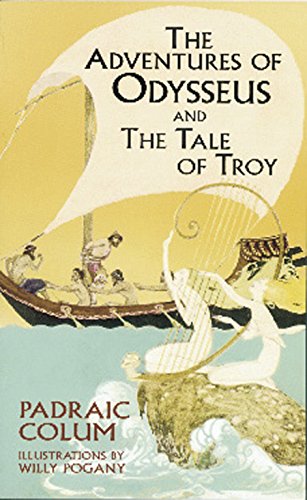




























































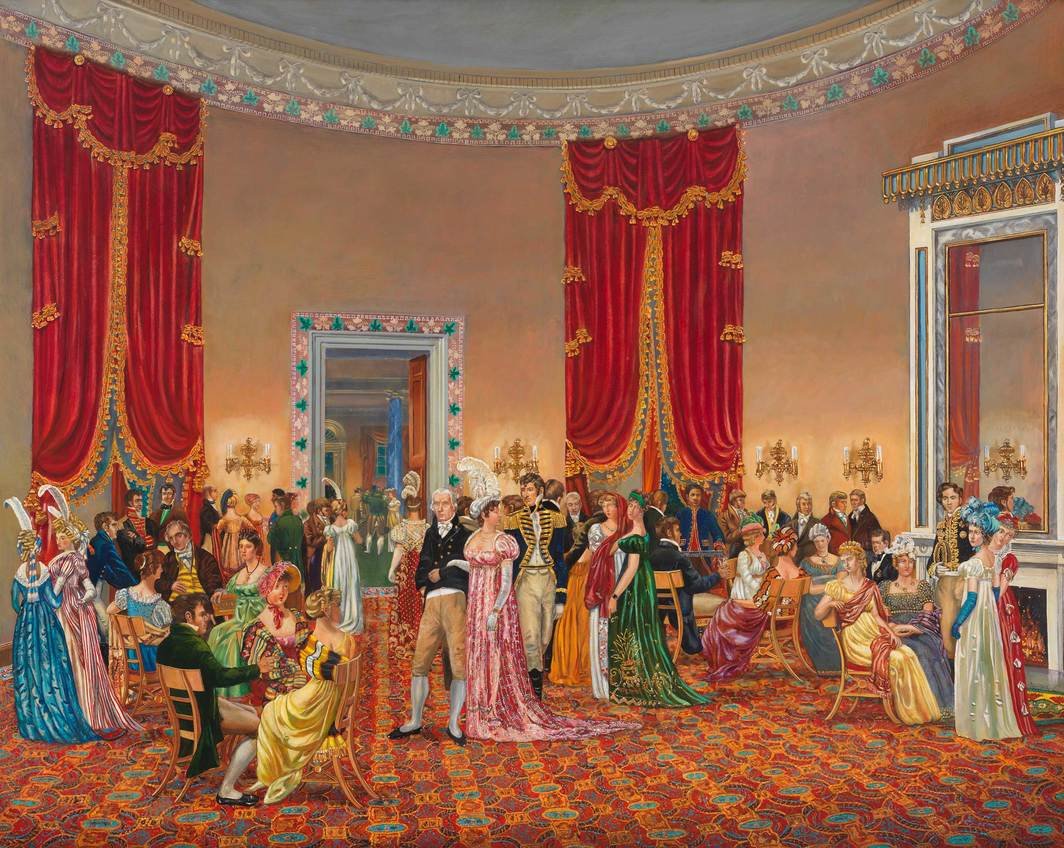





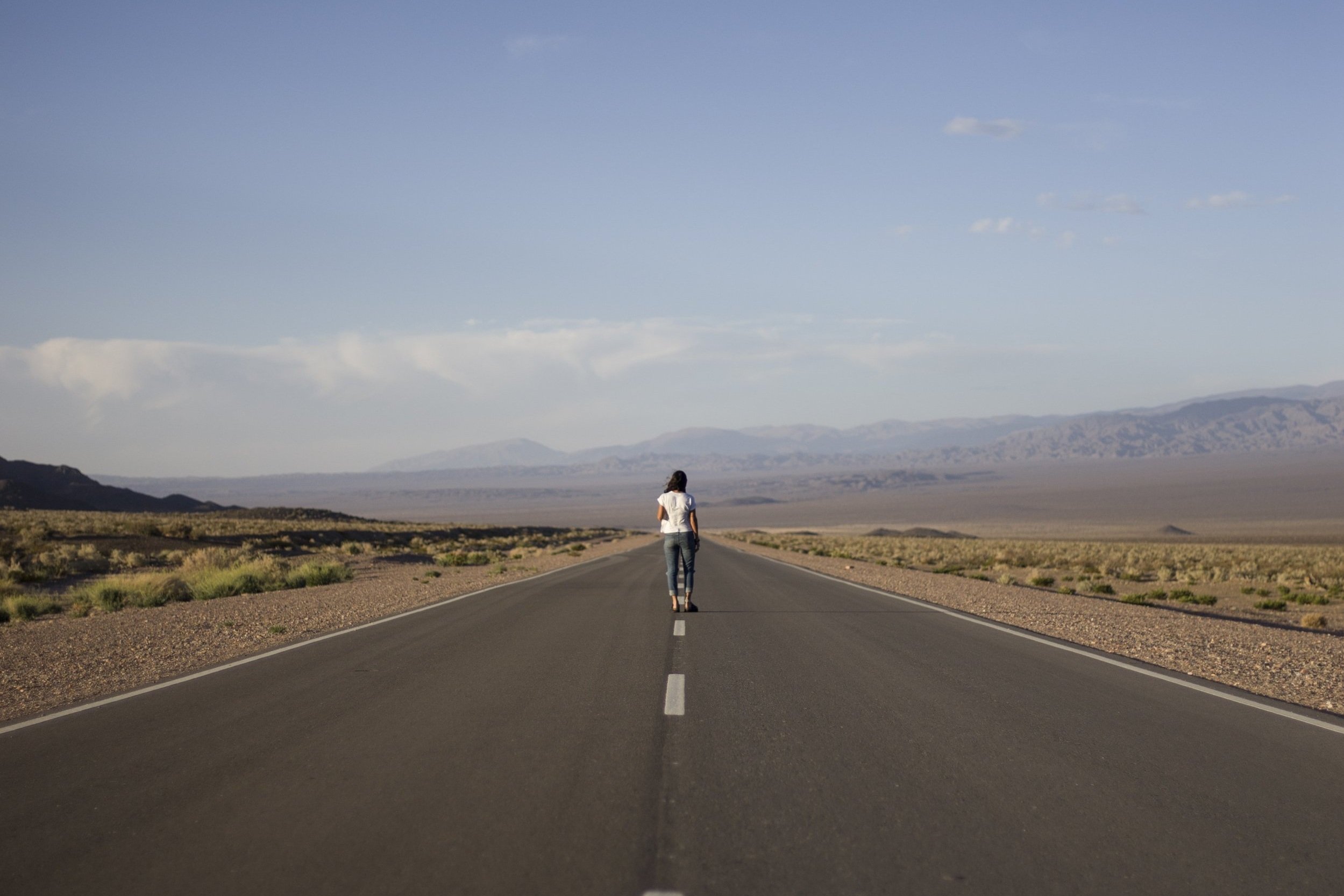














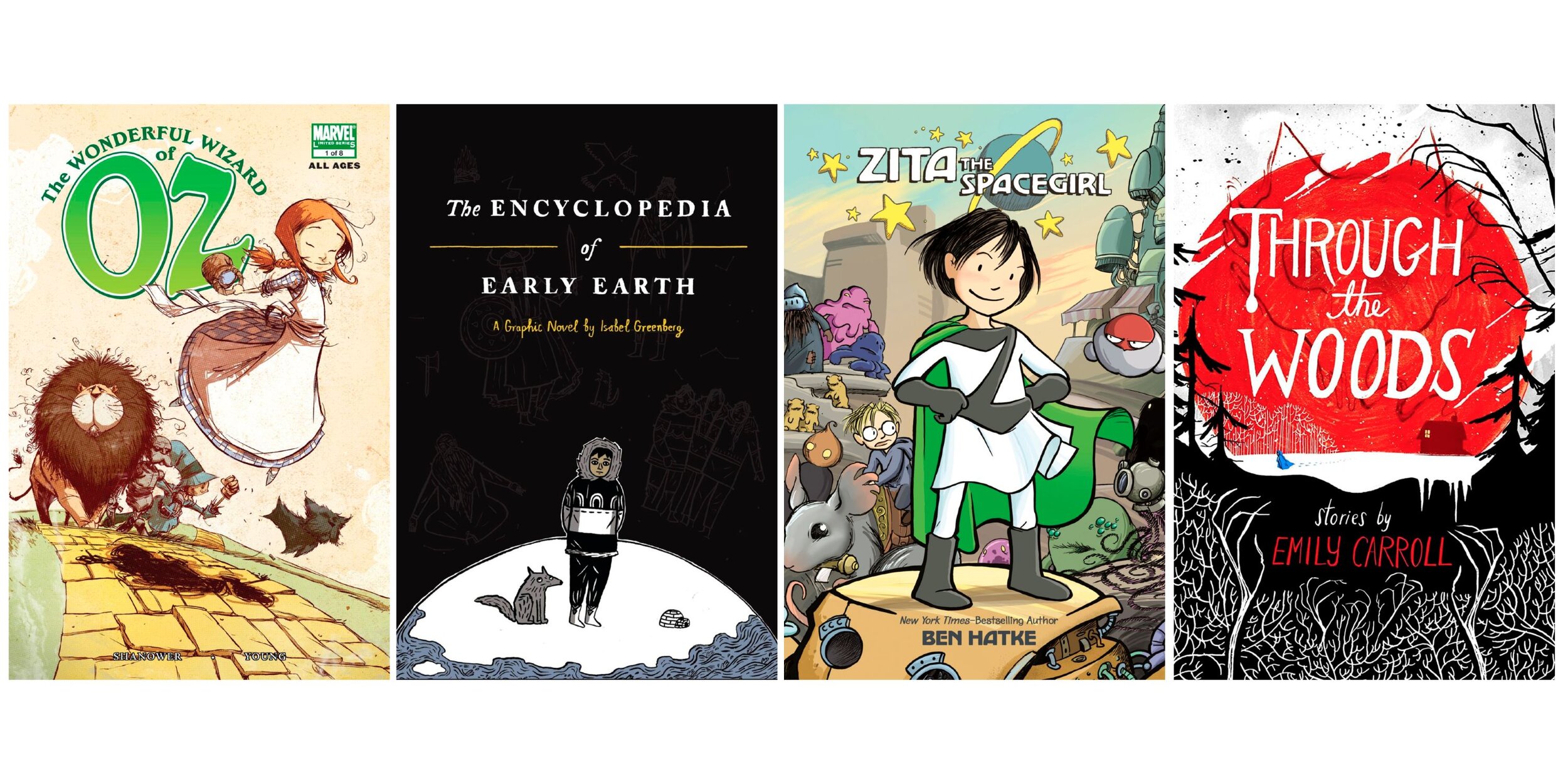

















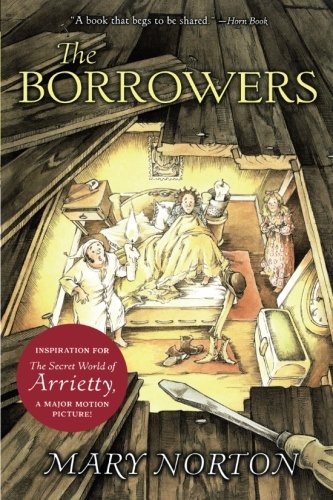














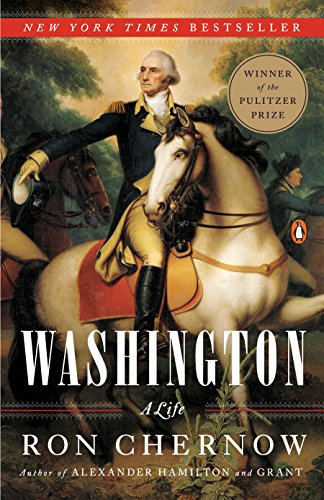
















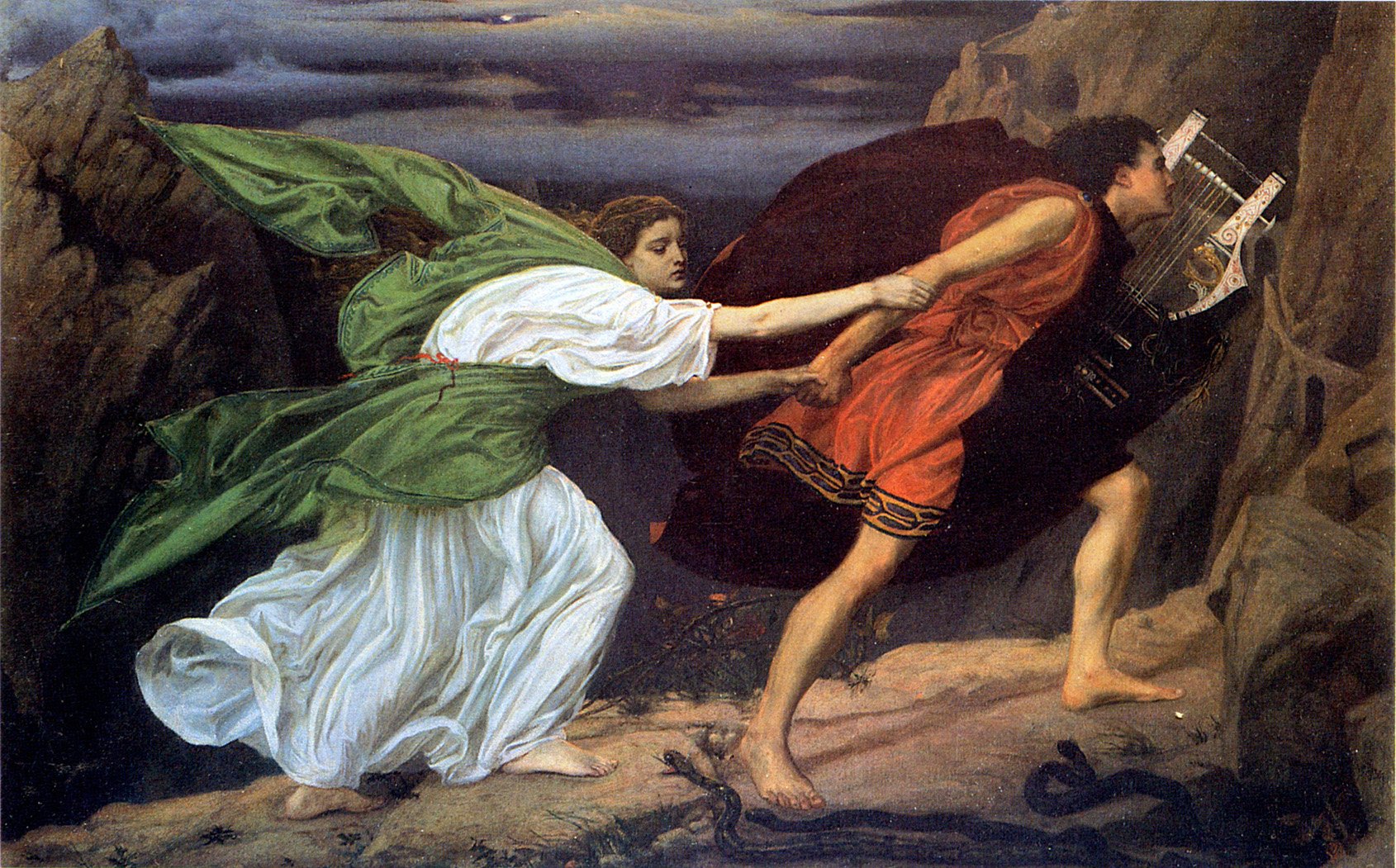
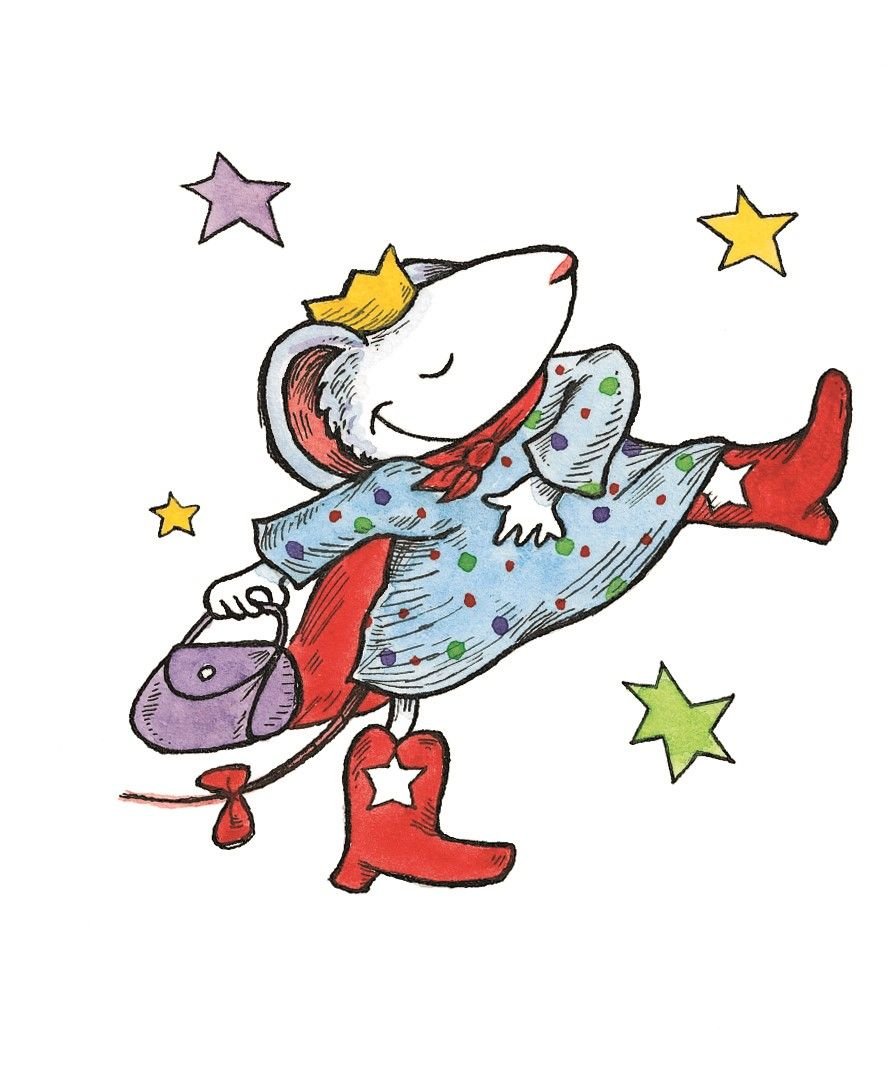
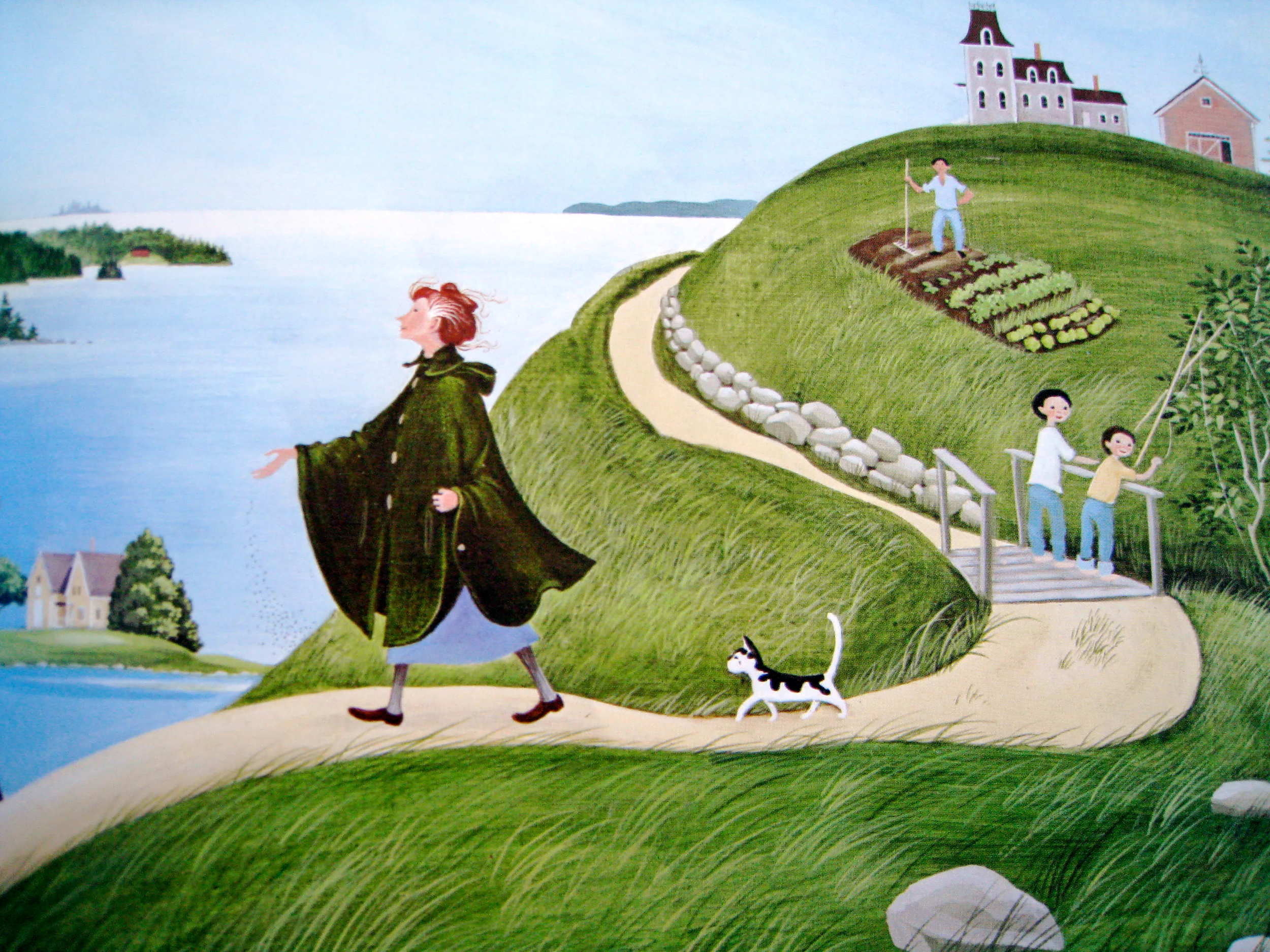




























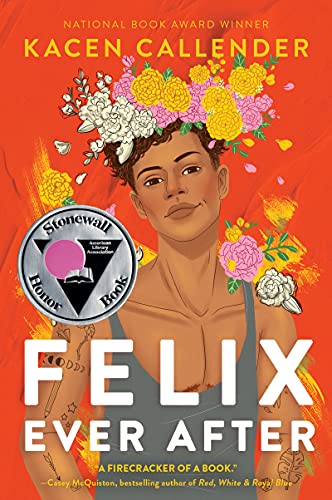




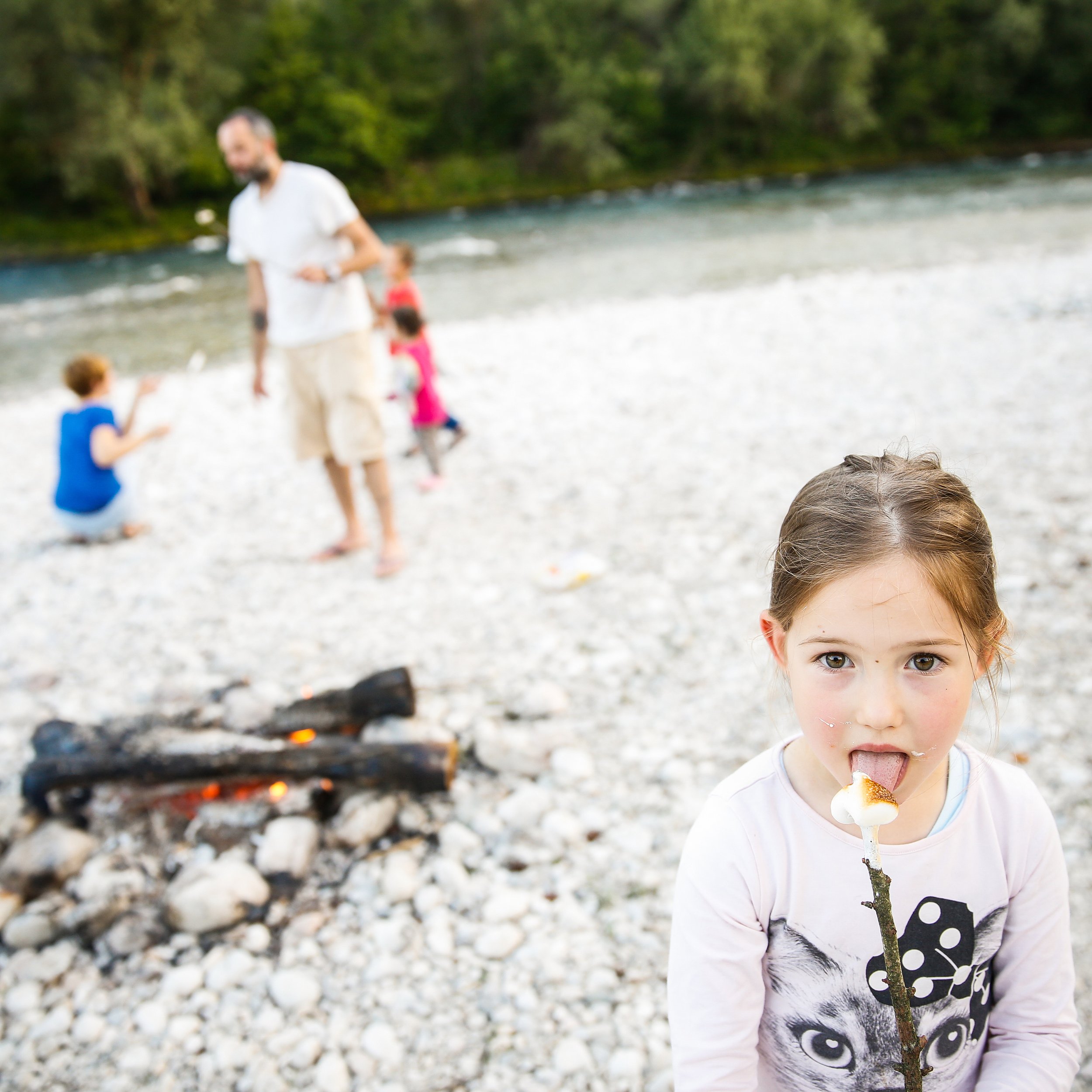




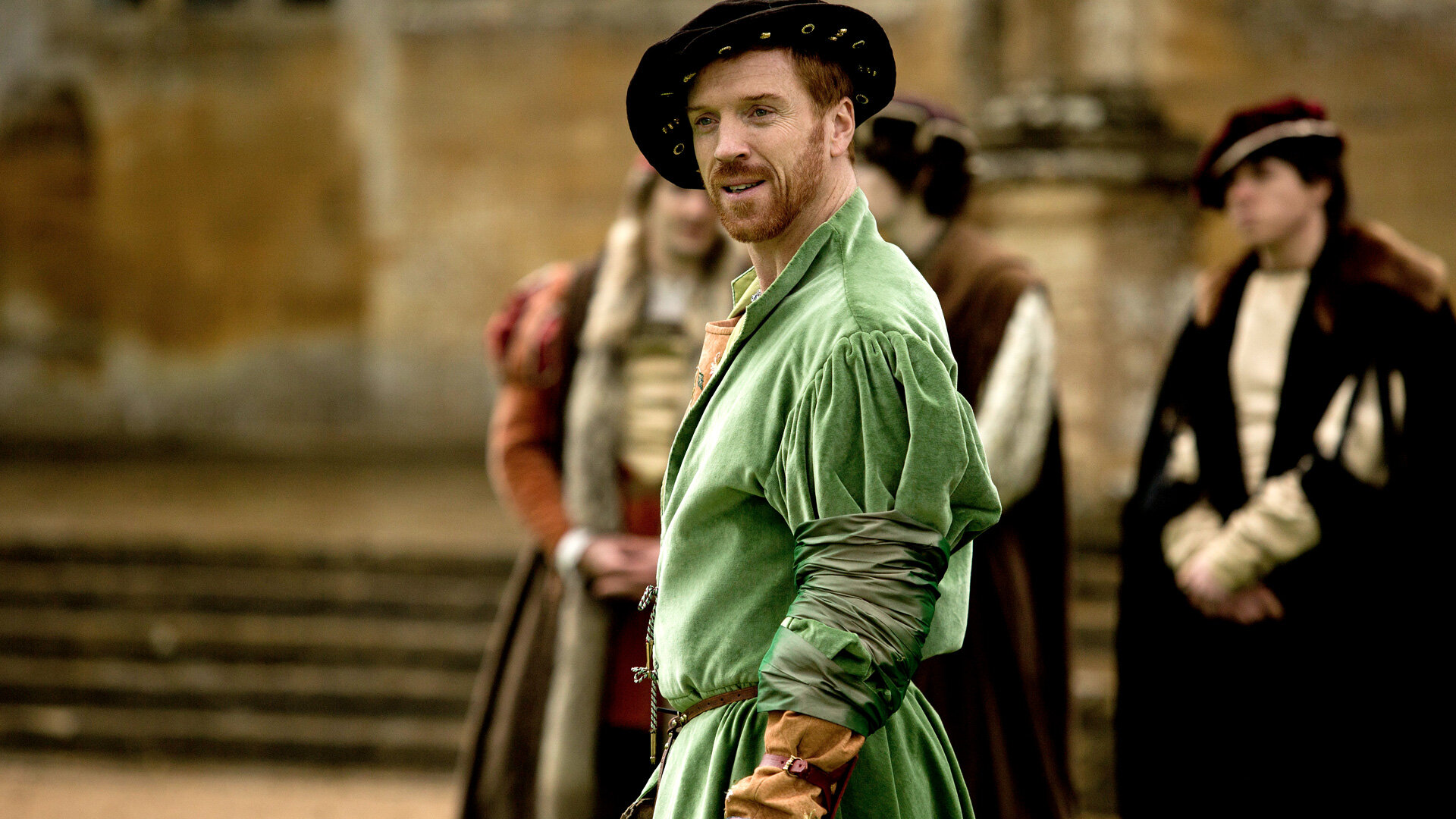

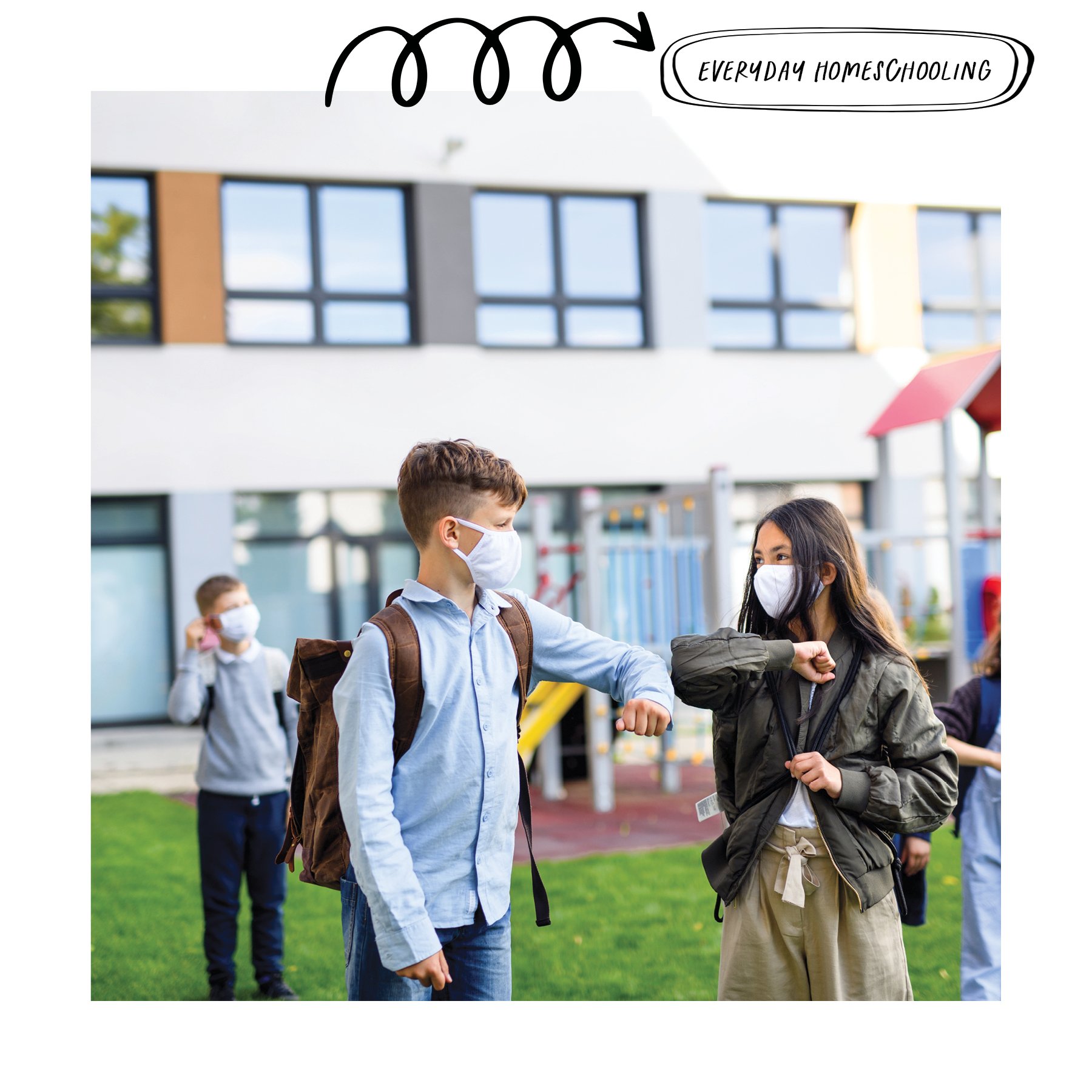



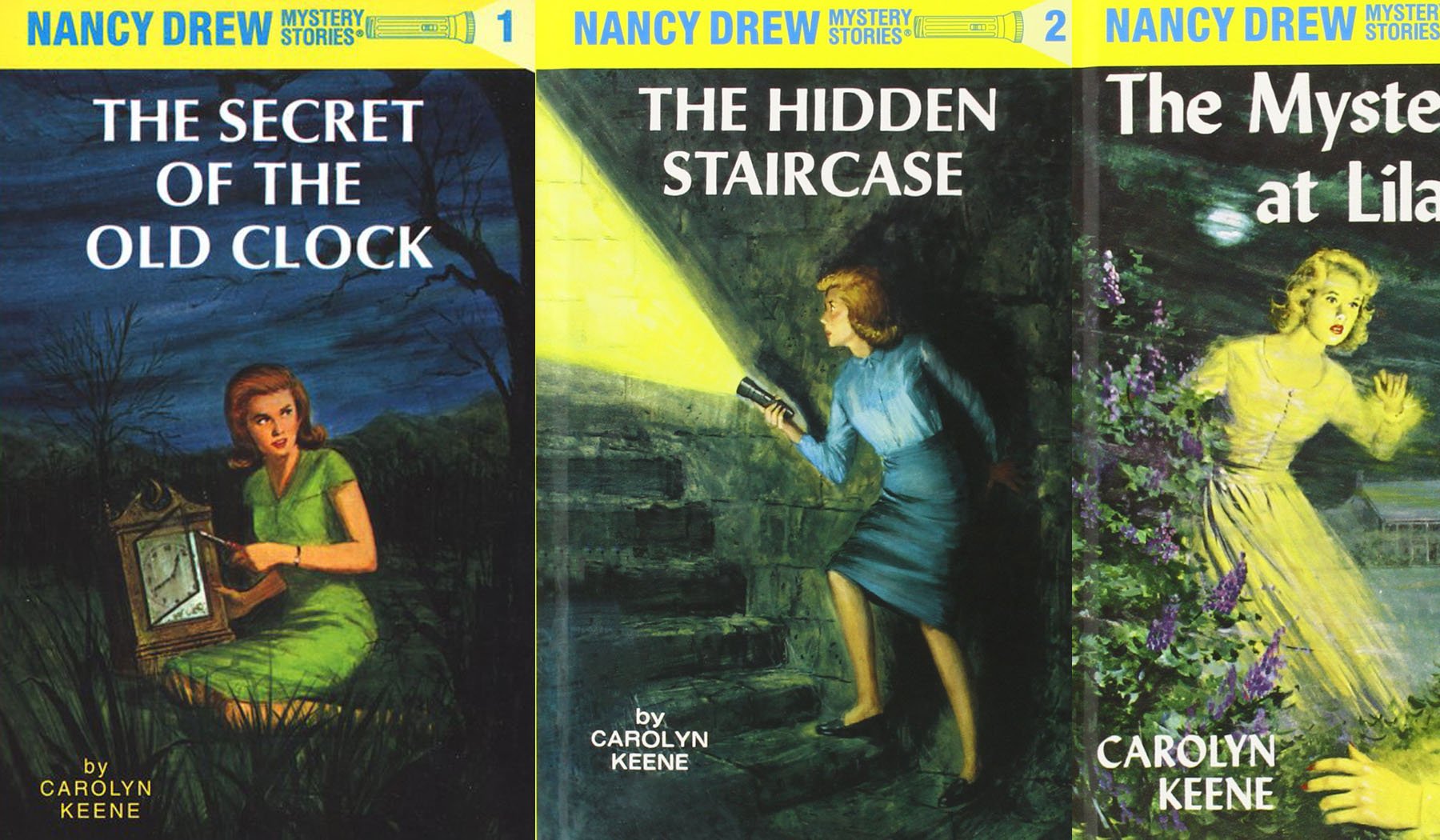














Looking for a middle grades fantasy for your next homeschool readaloud? We review three of our newer faves: The Time of Green Magic, Amari and the Night Brothers, and The Language of Ghosts.